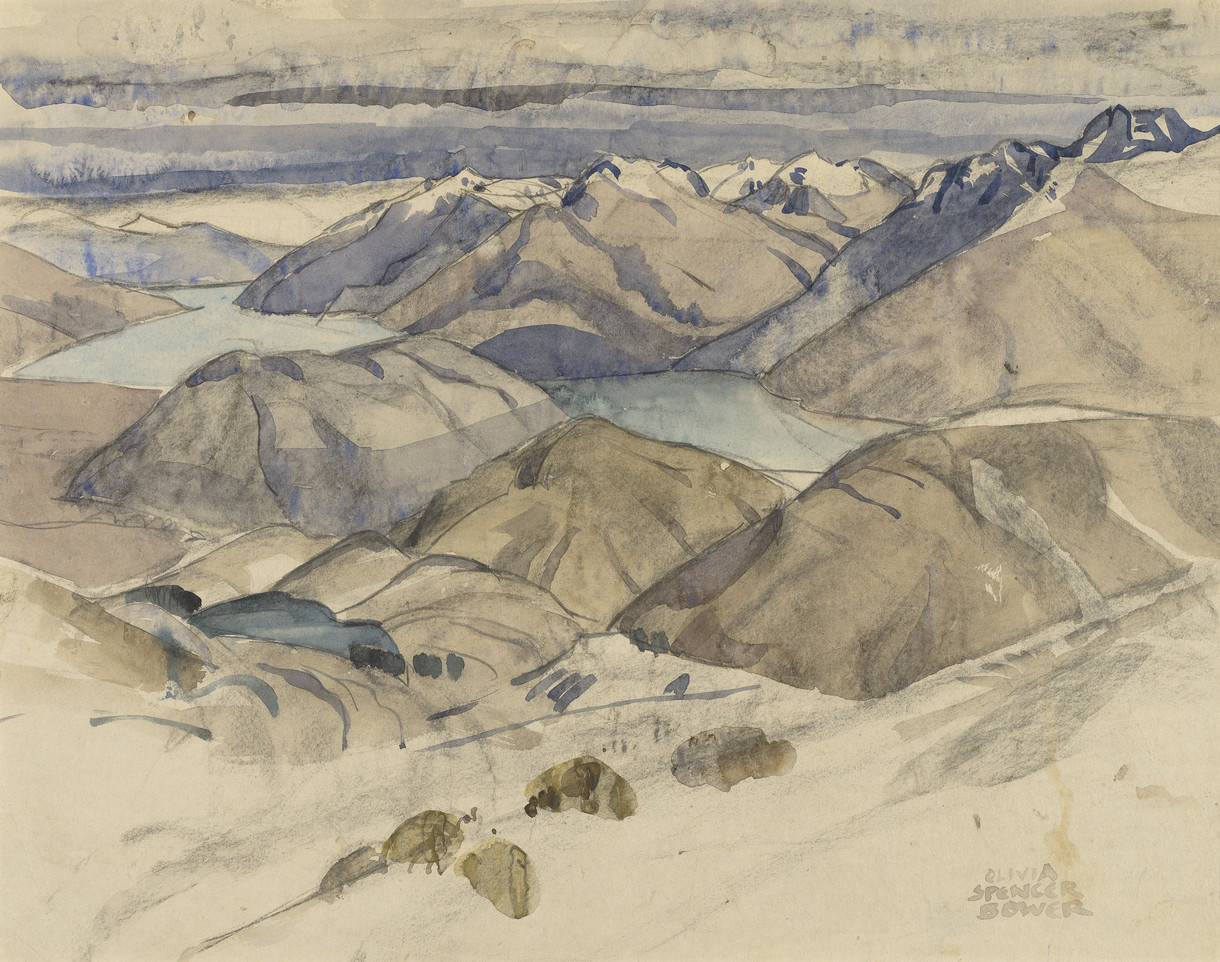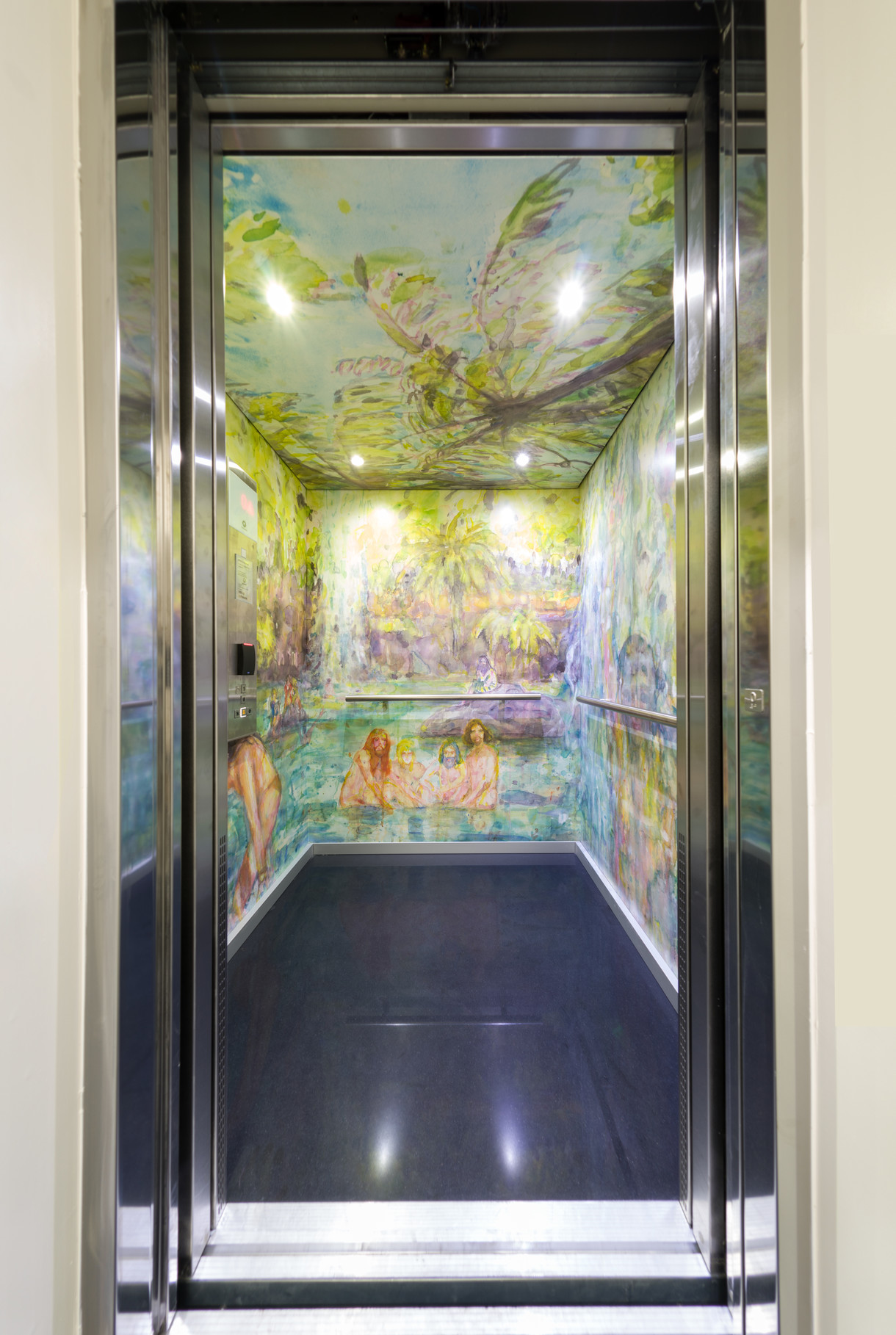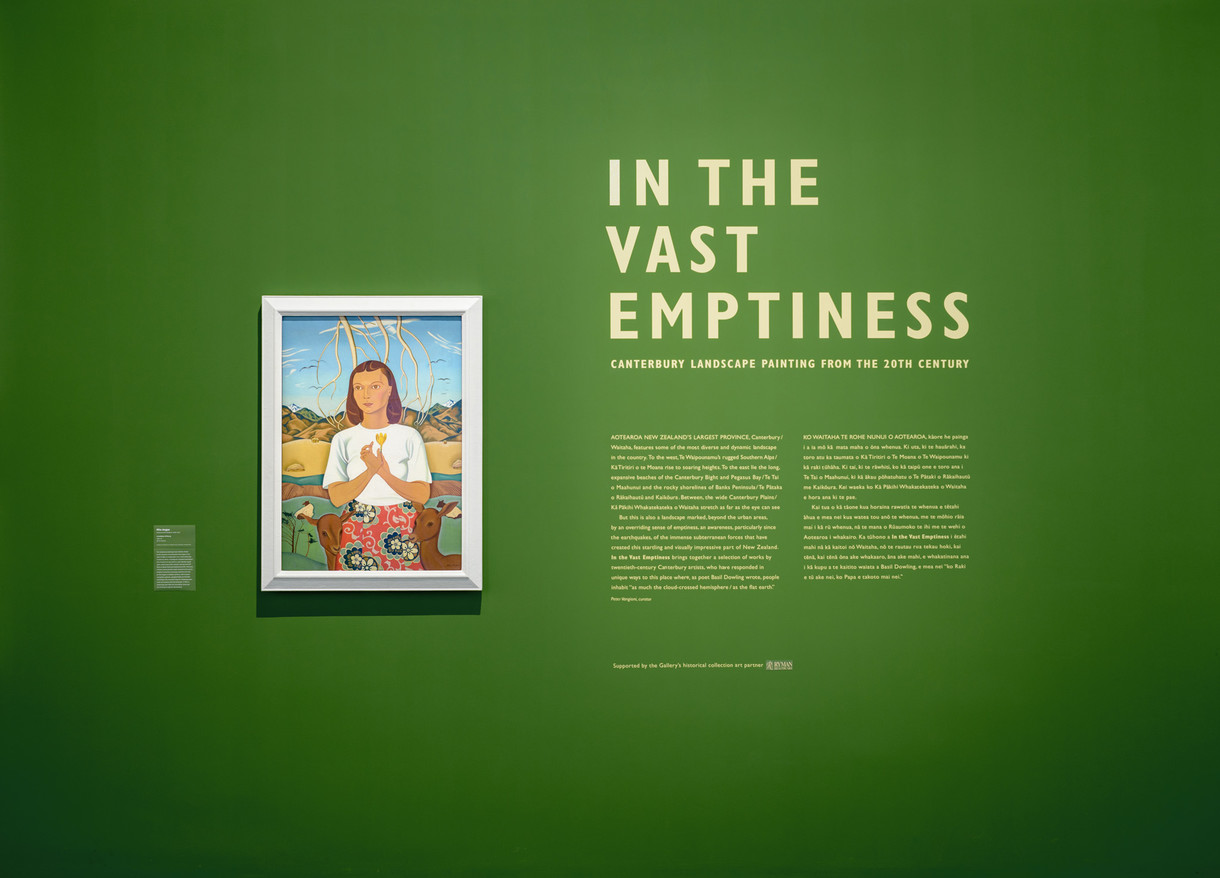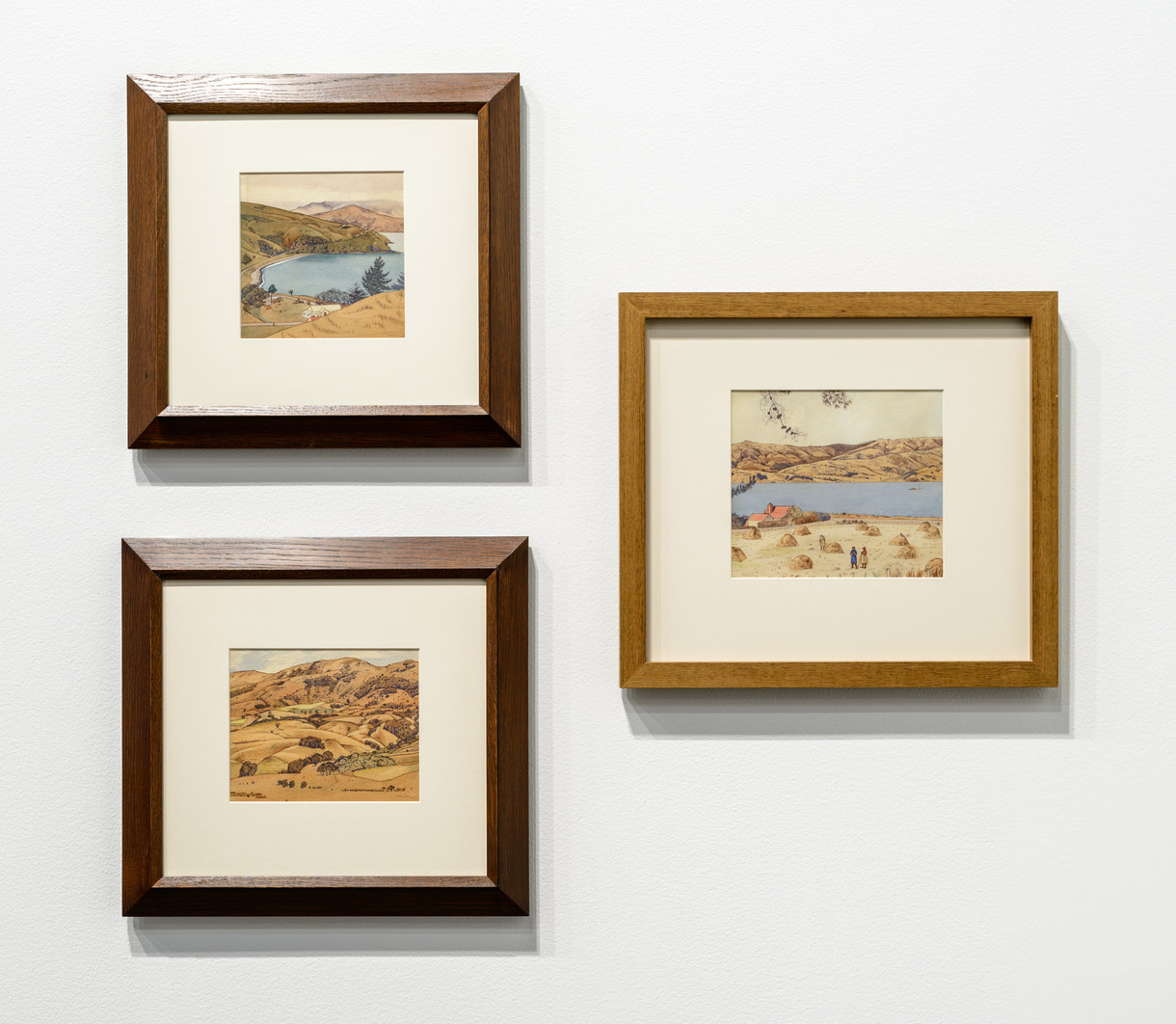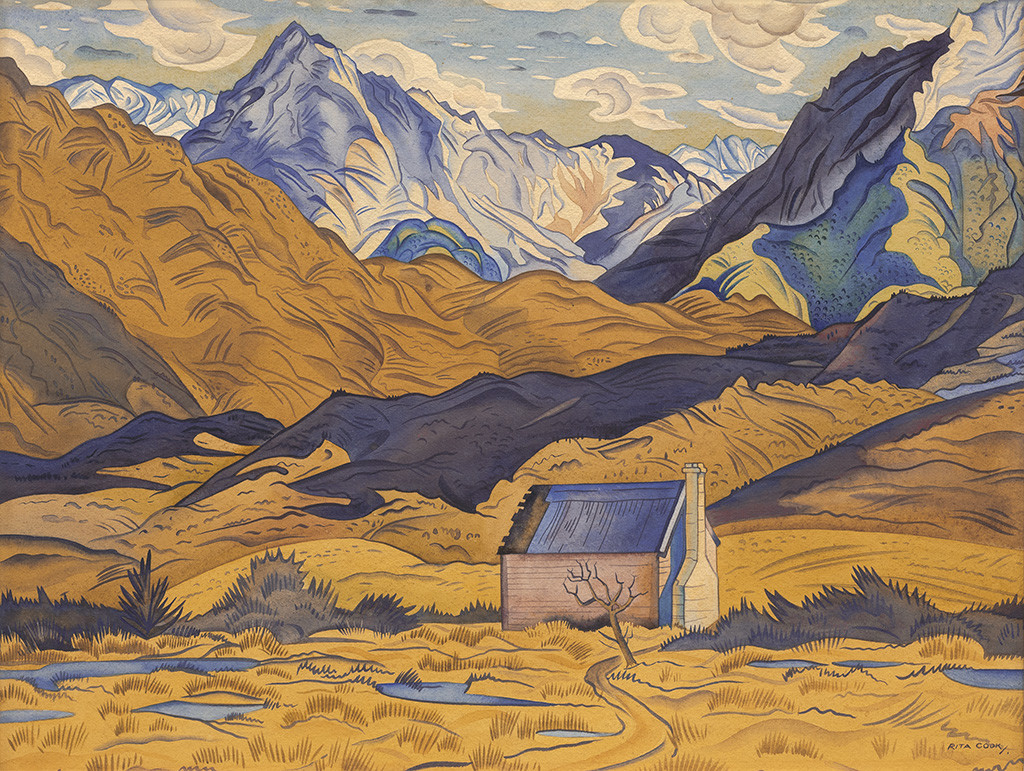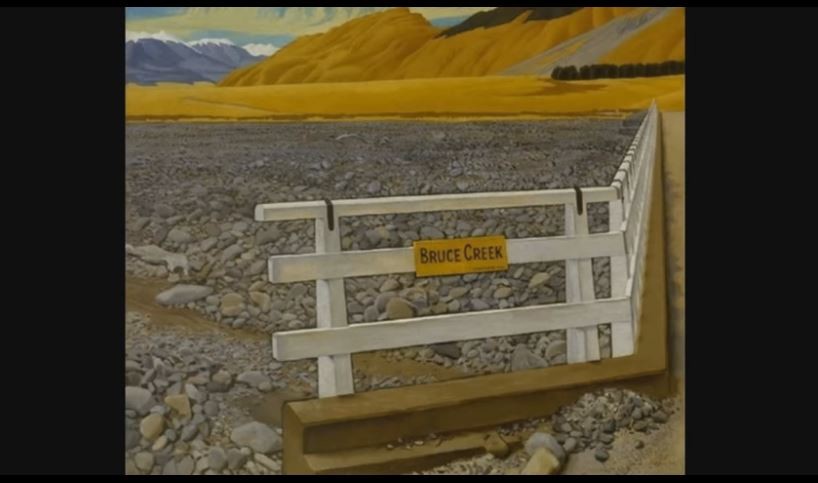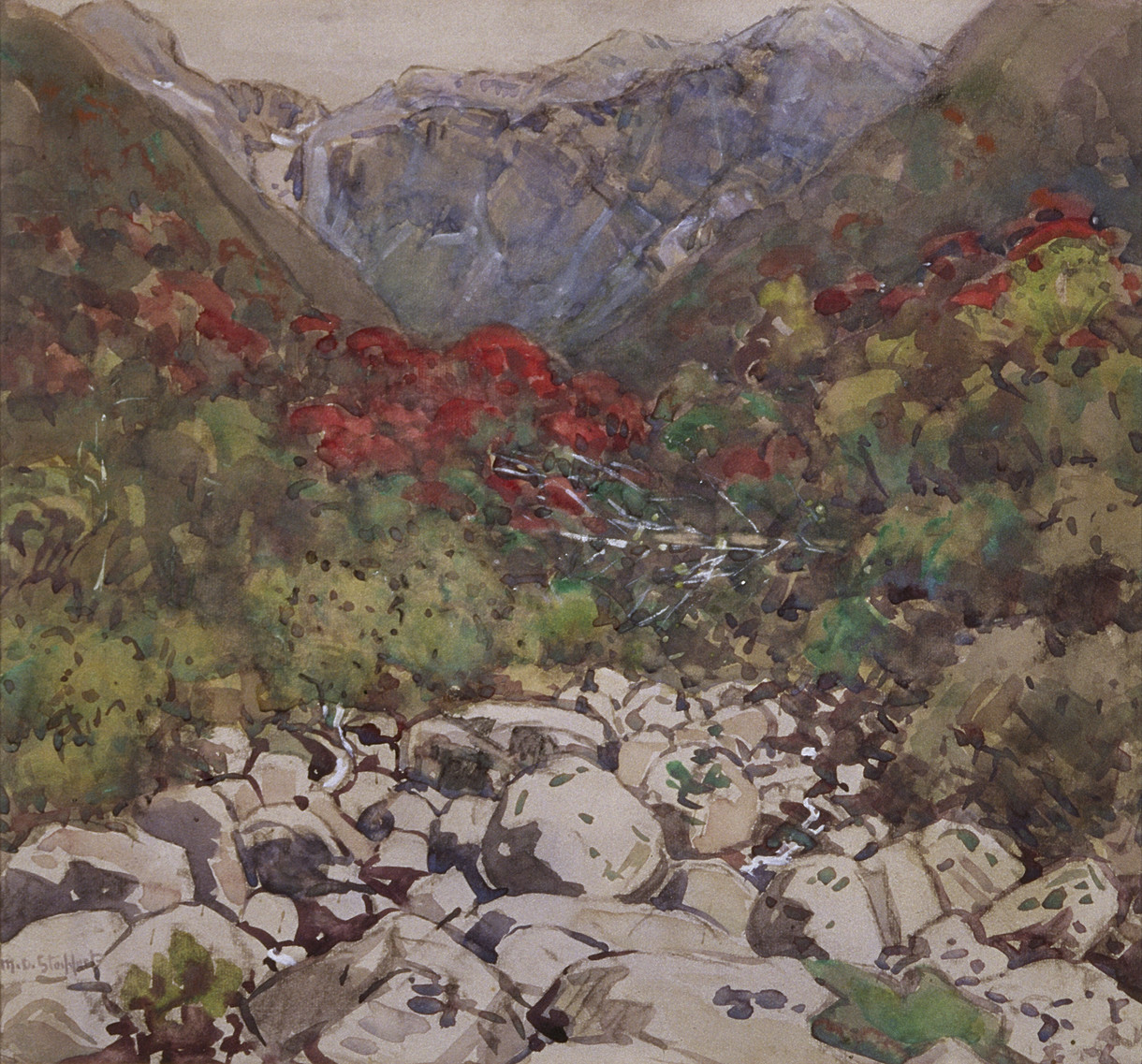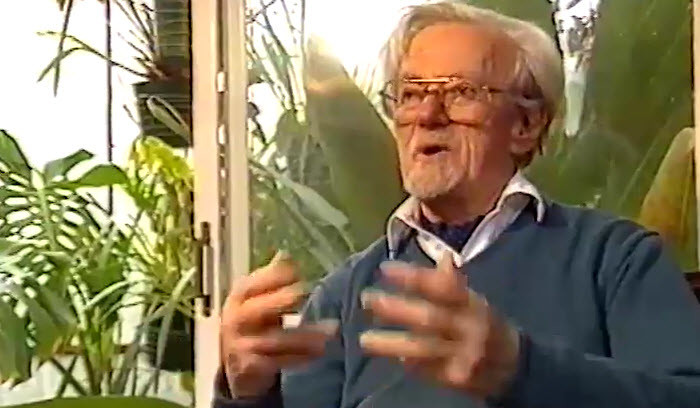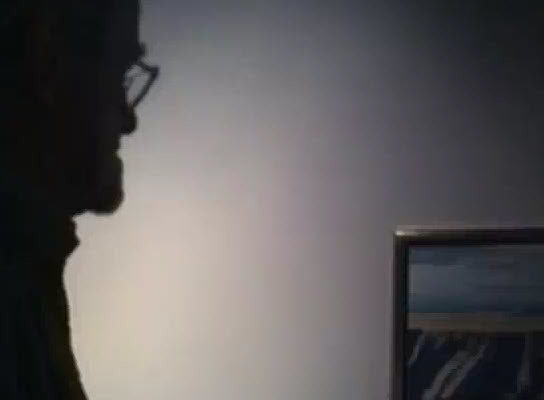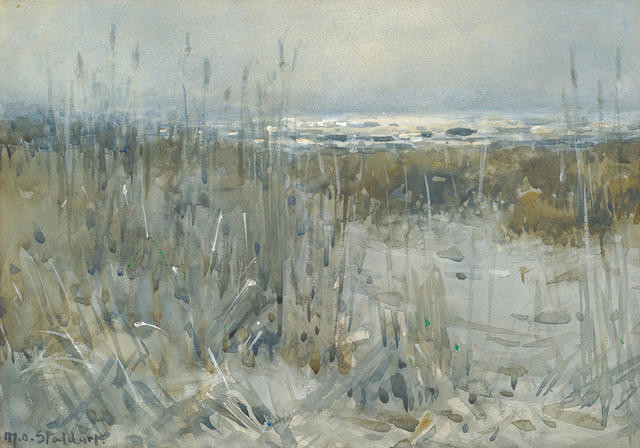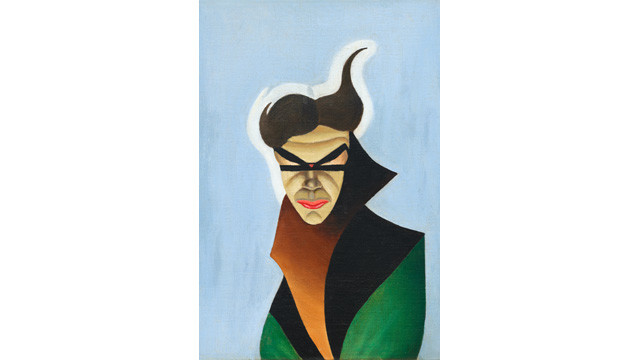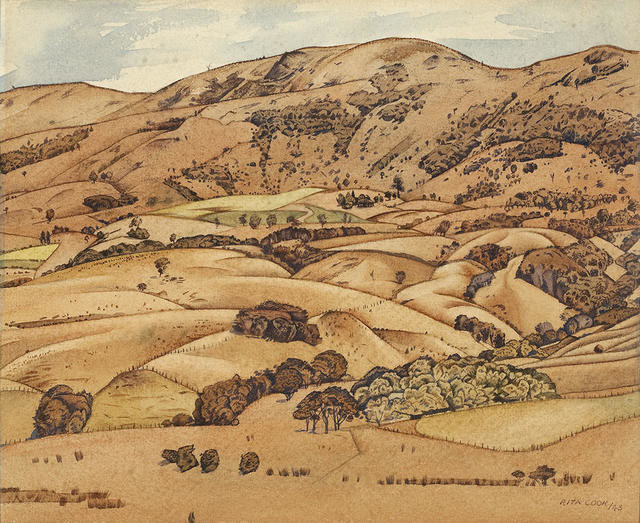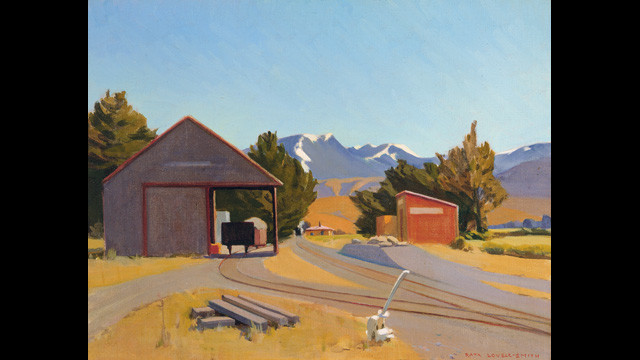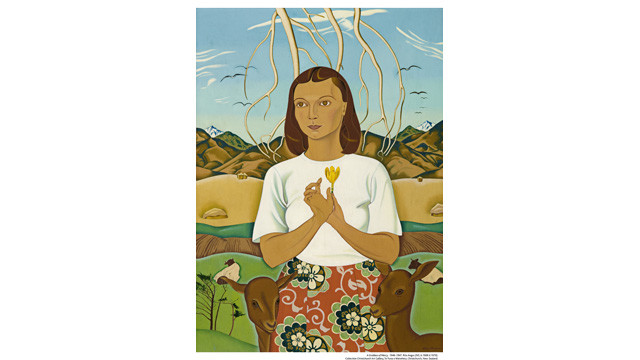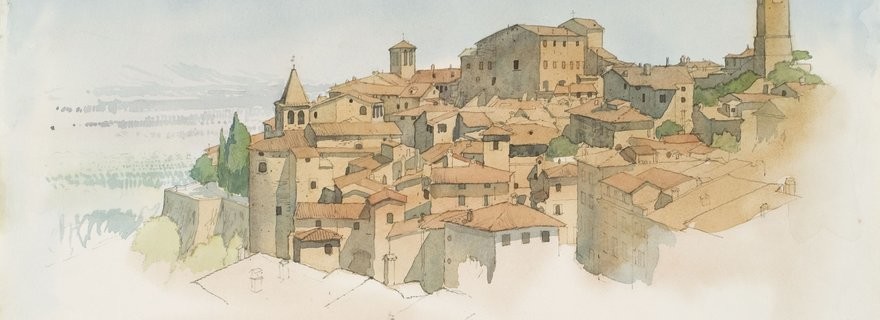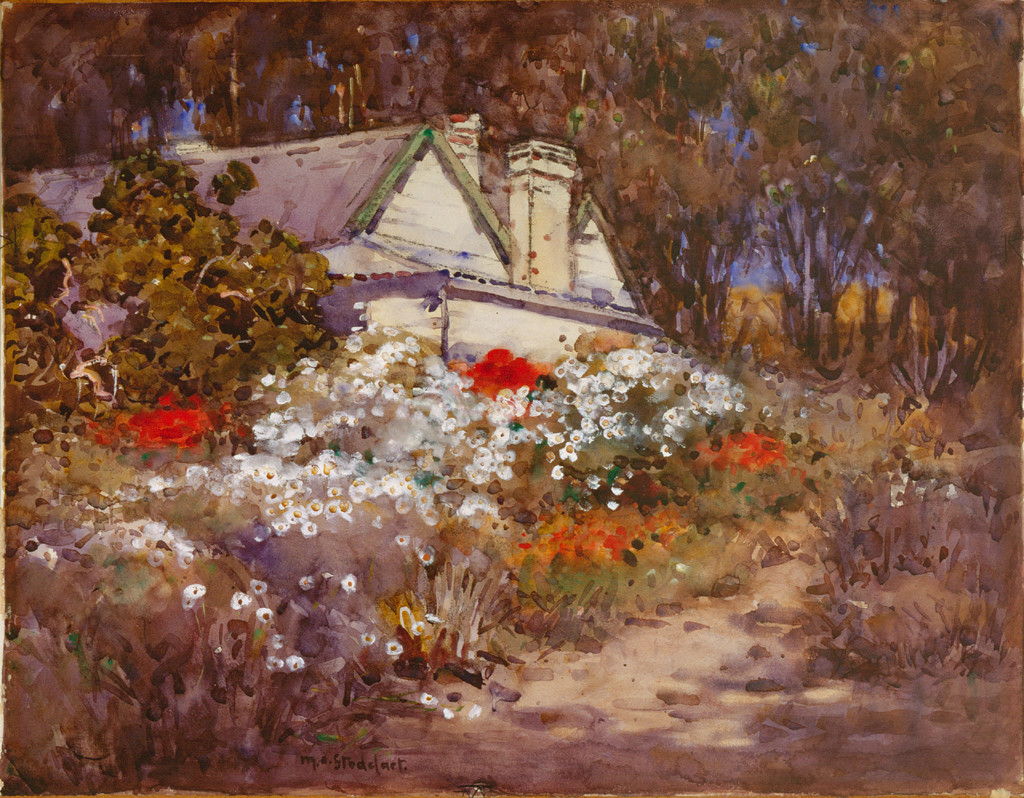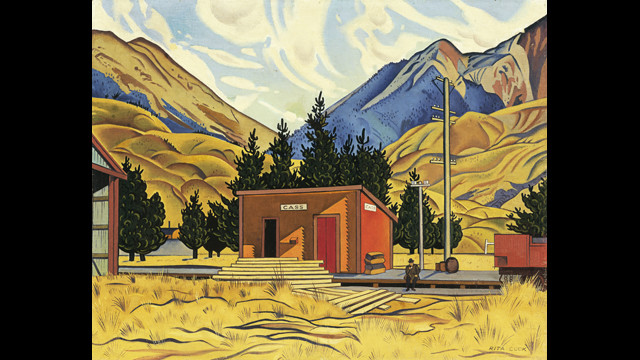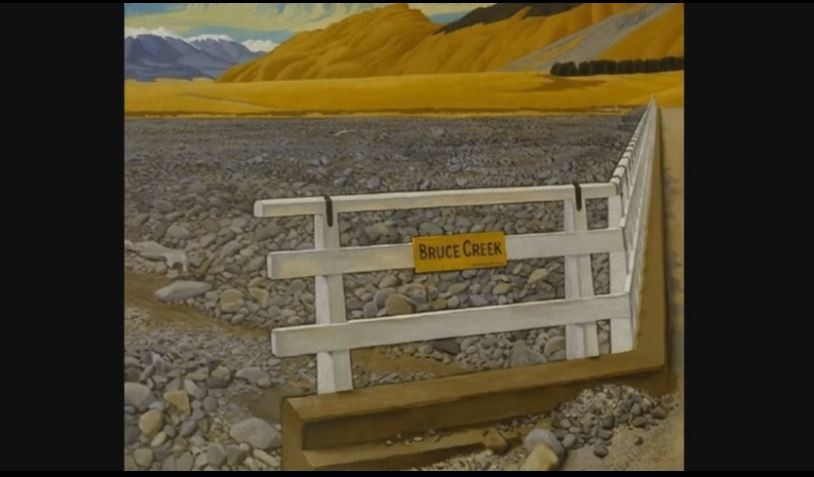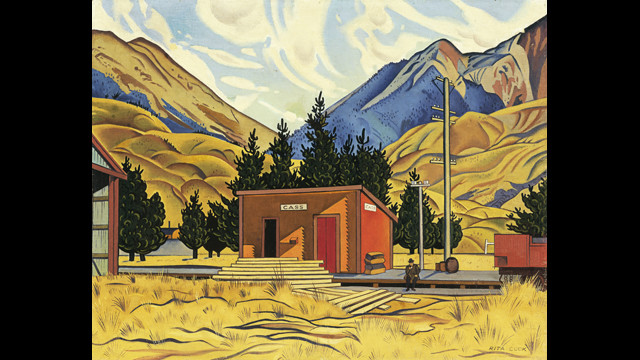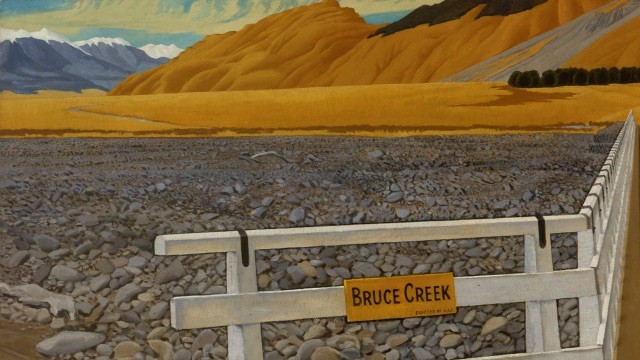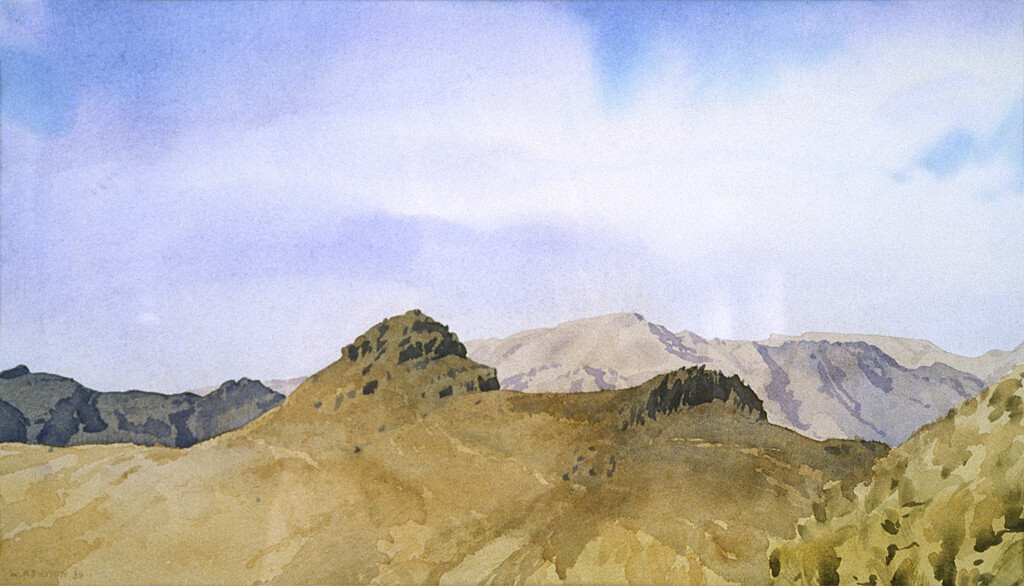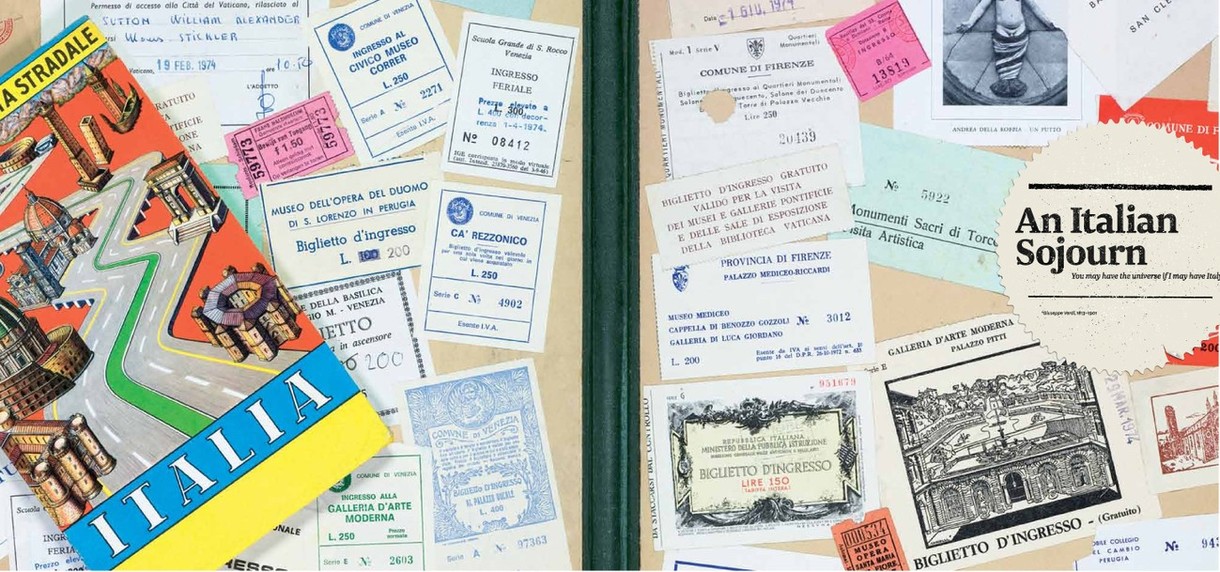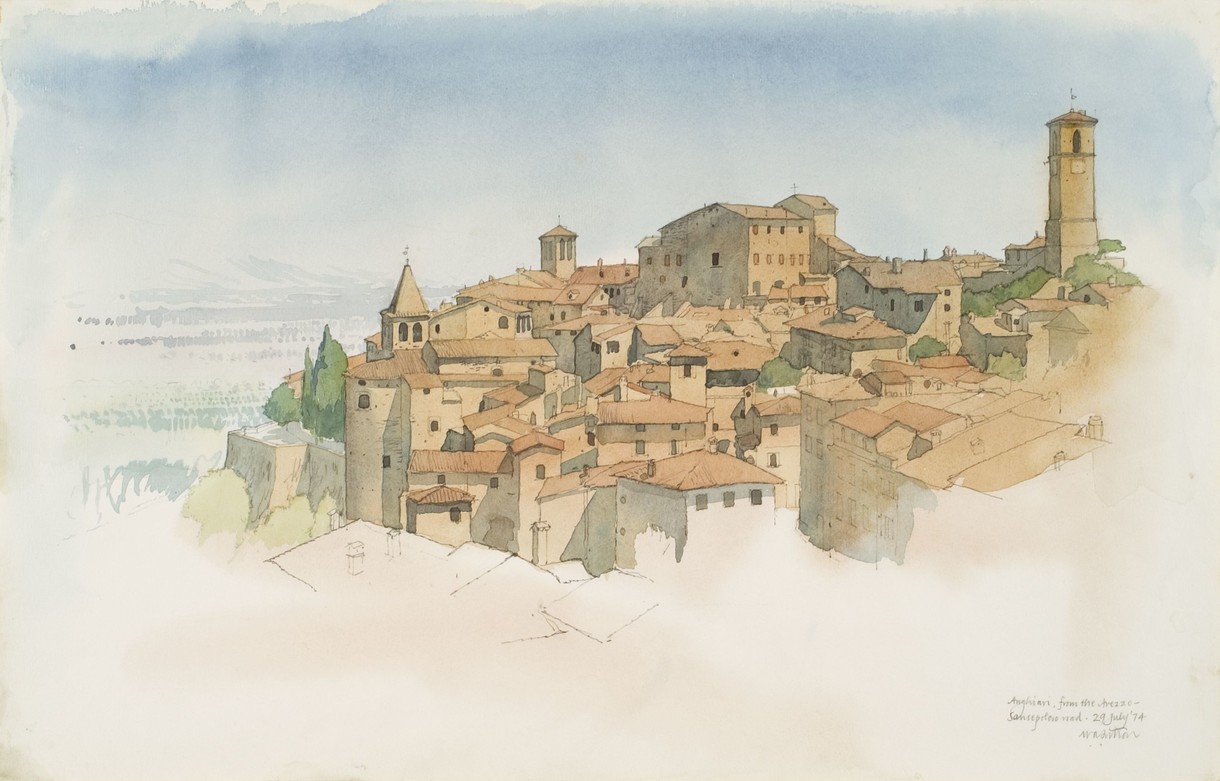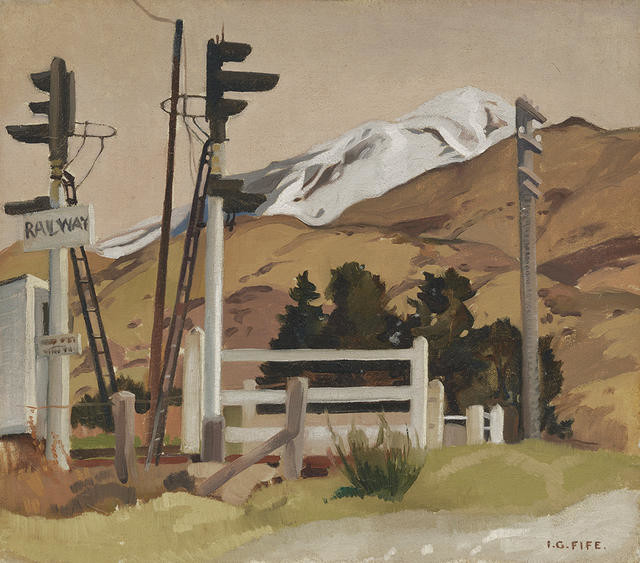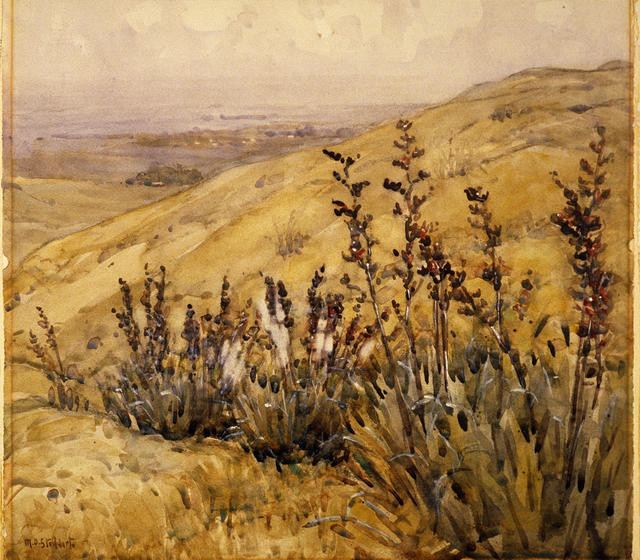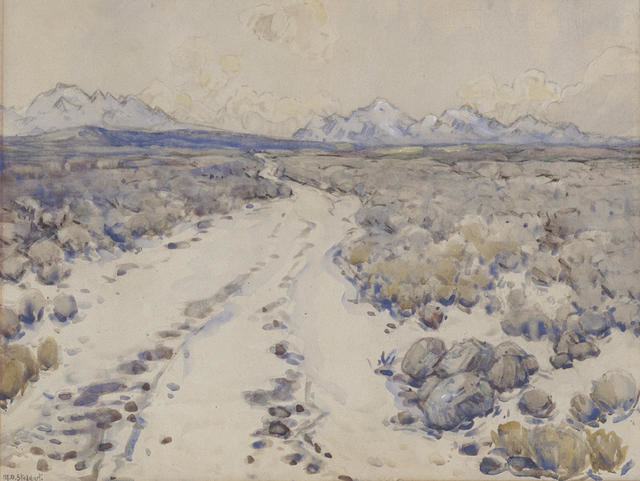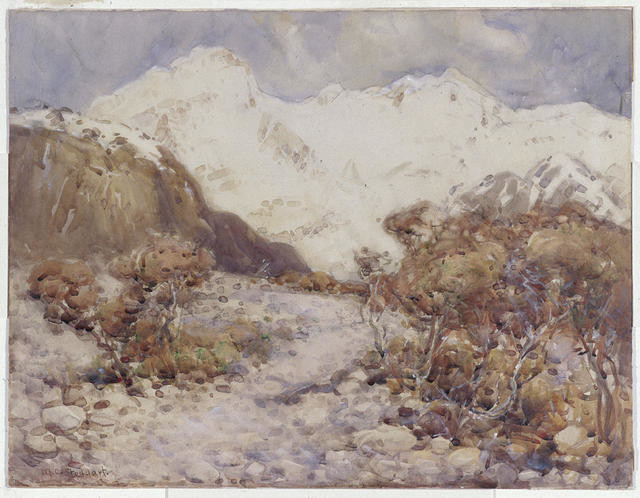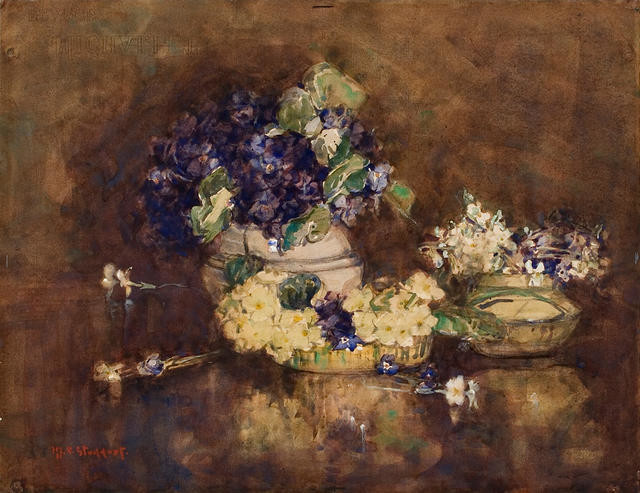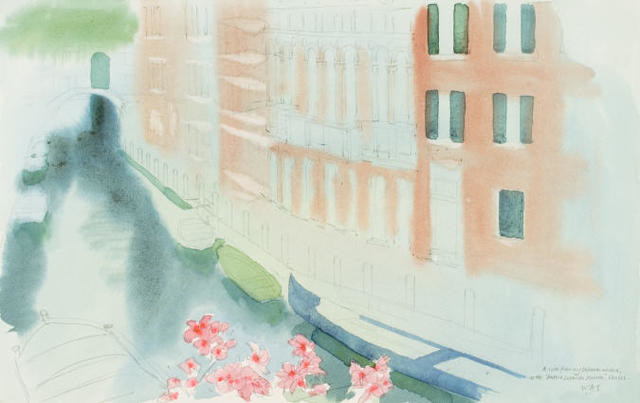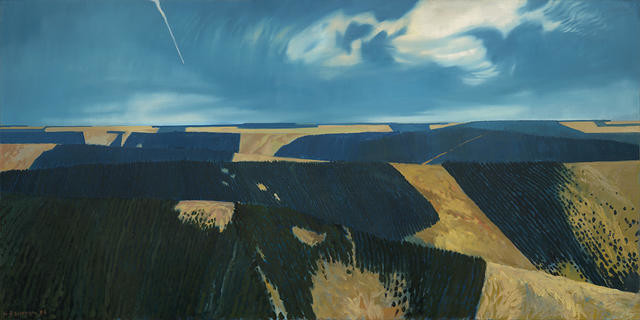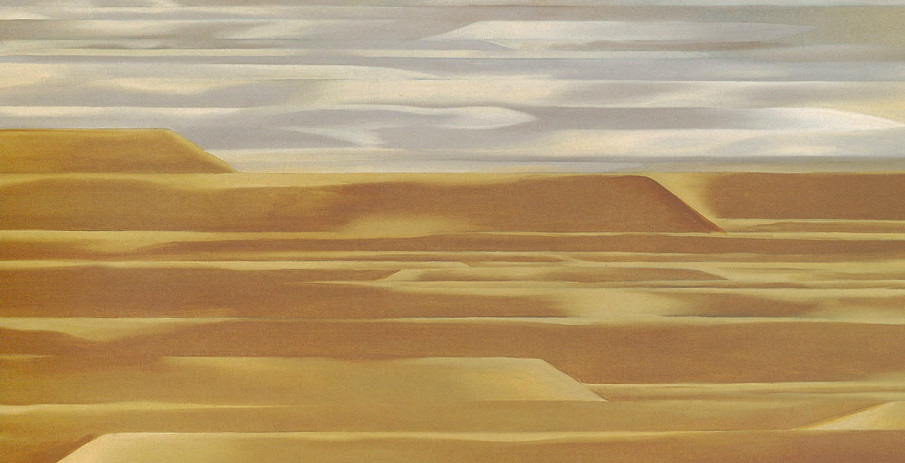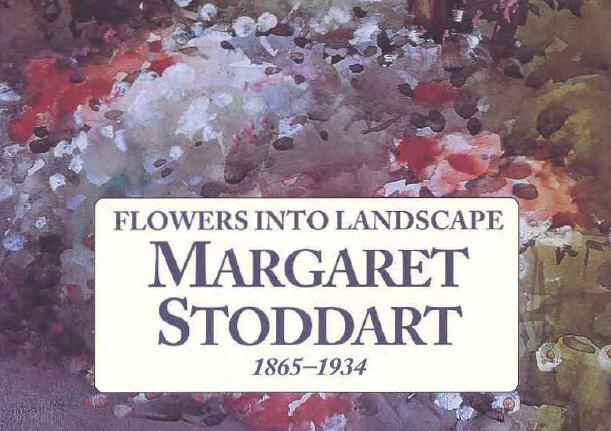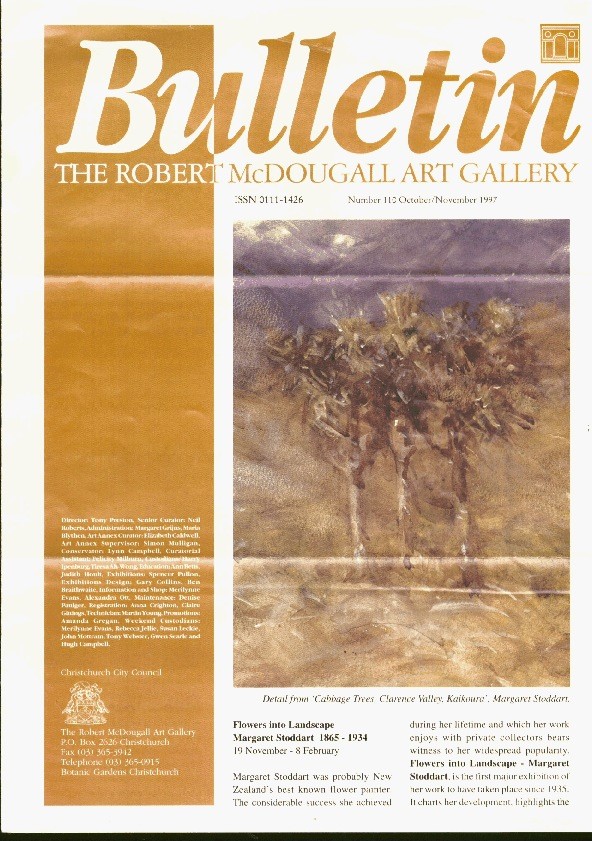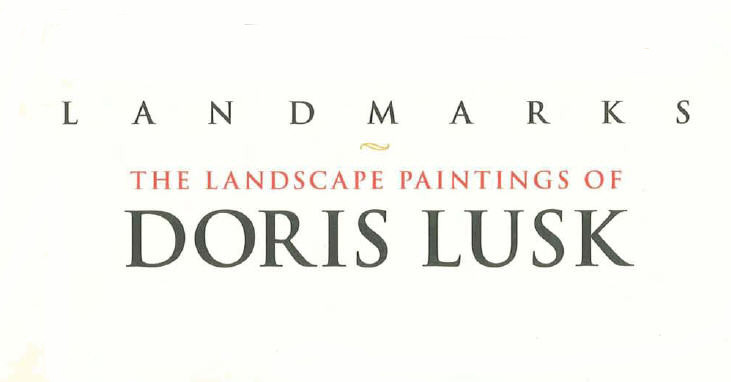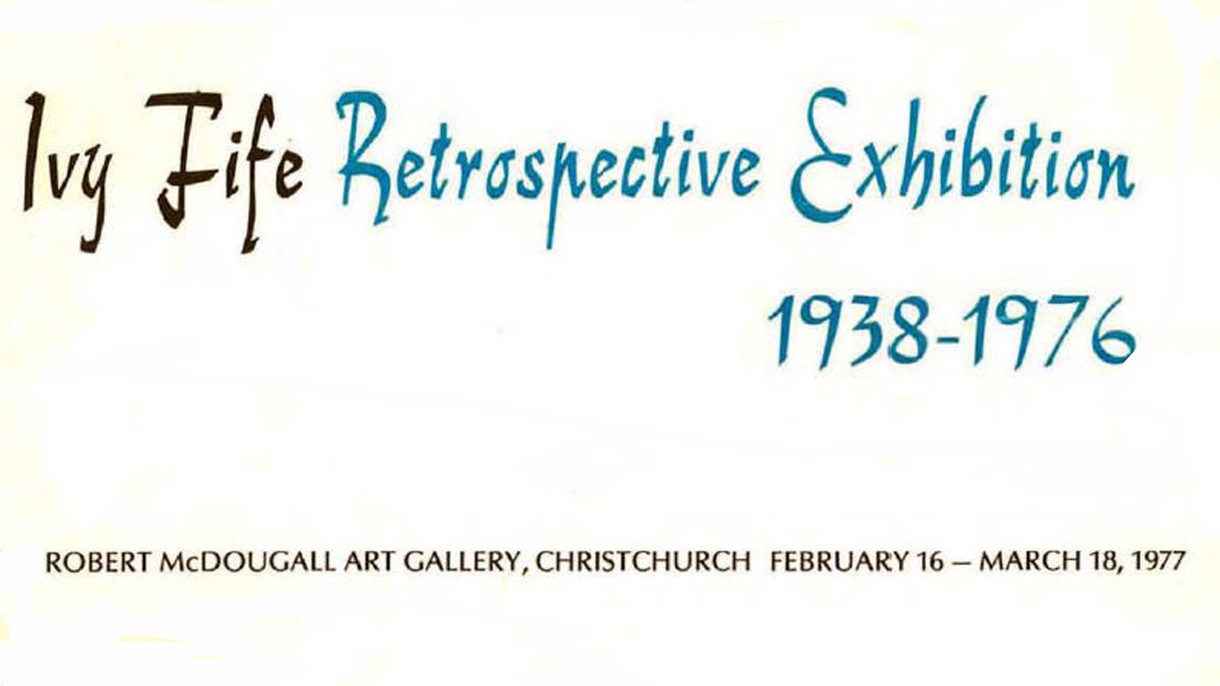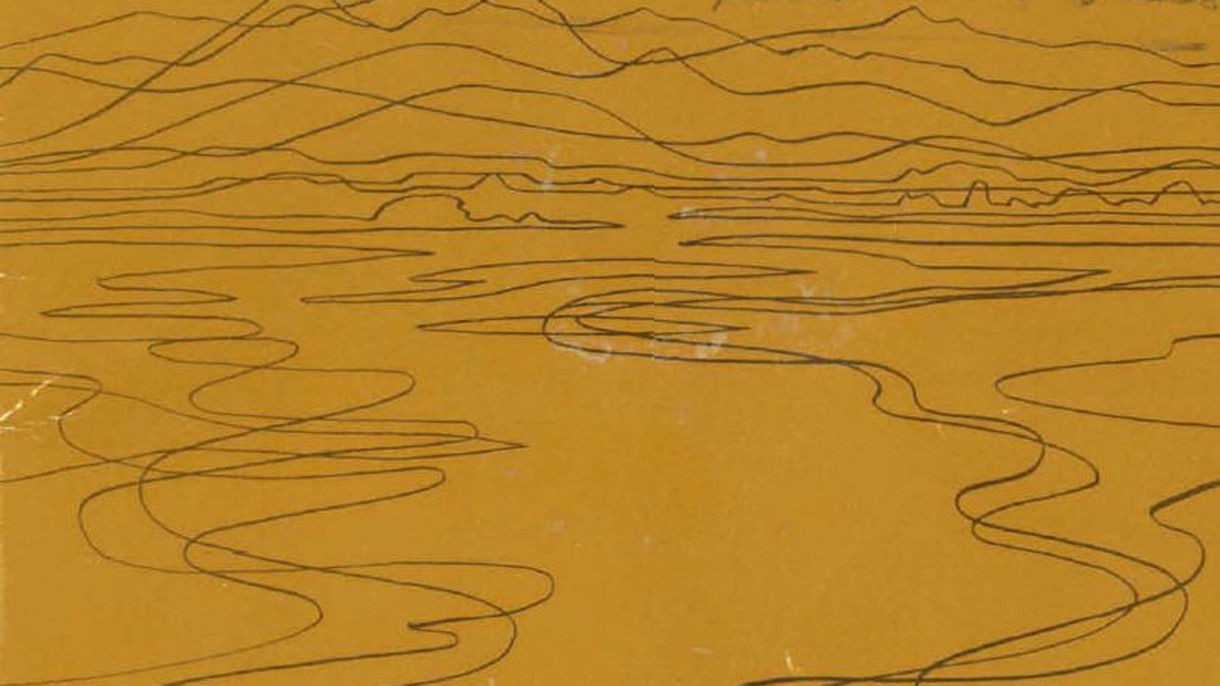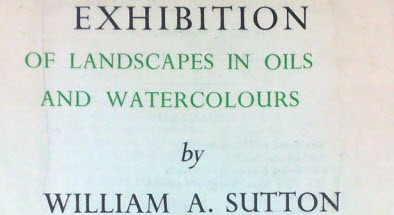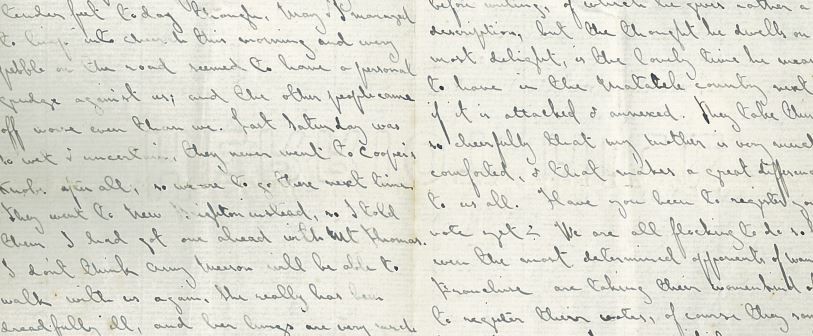B.
Bulletin
New Zealand's leading
gallery magazine
Latest Issue
B.21501 Mar 2024

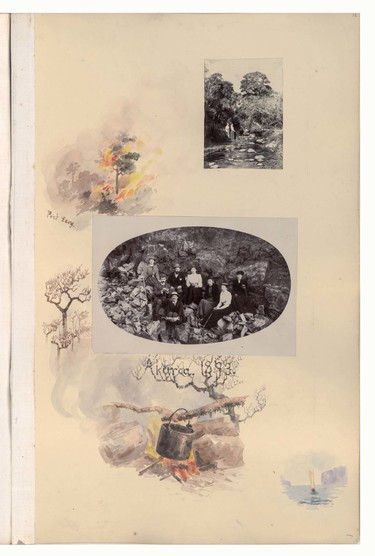
Margaret Stoddart Camping at Akaroa 1893. Album 2, Canterbury Museum, 2015.115.46-50, p.12
Exquisite Treasure Revealed
Anthony Wright and Julie King shed light on a collection of drawings and photographs compiled by artist Margaret Stoddart.
Canterbury Museum holds two albums compiled by Diamond Harbour artist Margaret Stoddart. The older of the two, containing images featured in this Bulletin, and itself currently exhibited in the Gallery, covers the period 1886–96. The album is handsomely bound in maroon, and stamped M.O.S. in gold. It contains a sort of travelogue by way of black and white photographs set amongst decorative painting, mostly of native flora, with some locality and date information.
It records her visits to the Chatham Islands, various places around Canterbury and the Southern Alps, and abroad in Tasmania and Victoria, Australia. I wish we could tell you more about how and when the album came to the Museum; the report recommending its formal accessioning in preparation for the loan to the Gallery simply notes that it has ‘unknown provenance’.
As a botanist by training (and at heart), I find the plant portraits are both pleasing in composition and botanically accurate enough to allow identification. Crossing the Hooker is embellished with two heads of the large mountain daisy Celmisia semicordata. Over the page, a photograph of a large clump of Mount Cook lilies (actually a buttercup—Ranunculus lyallii) lies over an exquisitely painted scape of its flowers which seems to leap from the page.
Museums and galleries care for a myriad of hidden treasures behind those on public display. It’s great that the reopening of Christchurch Art Gallery Te Puna o Waiwhetū can also shed light on some of Canterbury Museum’s unseen taonga.
Anthony Wright
Director, Canterbury Museum. Credits written by Julie King, art historian and author of Flowers into Landscape: Margaret Stoddart
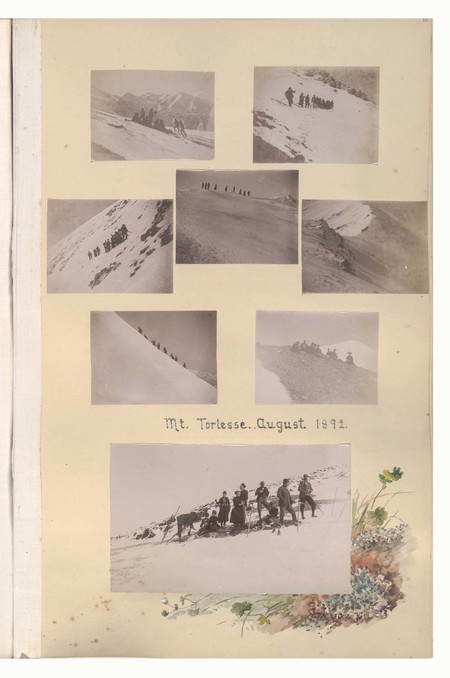
Margaret Stoddart Mt Torlesse 1892. Album 2, Canterbury Museum, 2015.115.34-42, p.10
Mt Torlesse 1892
In August 1892, Margaret joined a climbing expedition to Mount Torlesse. These photographs, which were taken with a hand-held quarterplate camera, record the arduous ascent. The party spent seven hours travelling across snow and the frozen and slippery shingle to the steepest slopes, where they were roped together, and reached the summit by cutting steps into the ice. On 1 September, the Canterbury Times commented that ‘Christchurch ladies are now adding the invigorating pastime of mountaineering to their other athletic pursuits … and, are specially to be commended for the plucky way in which they took to it.’
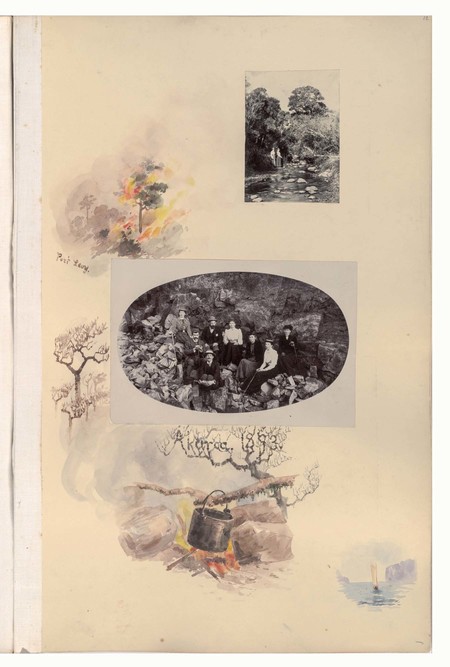
Margaret Stoddart Camping at Akaroa 1893. Album 2, Canterbury Museum, 2015.115.46-50, p.12
Camping at Akaroa 1893
Walking parties were popular in Margaret’s social circle, and the Port Hills and Banks Peninsula were favourite destinations. One clipping in her sister Mary’s album describes an excursion to Akaroa and back, which was completed in four days. Taking the launch to Diamond Harbour, the party walked to Purau, along the Port Levy road and on to Little River, with an overnight stay at the Hill Top, before making their descent into the harbour. Margaret can be identified in the photograph, wearing a white blouse, and seated at the centre of the group. Her lively sketches illustrate the excursion.
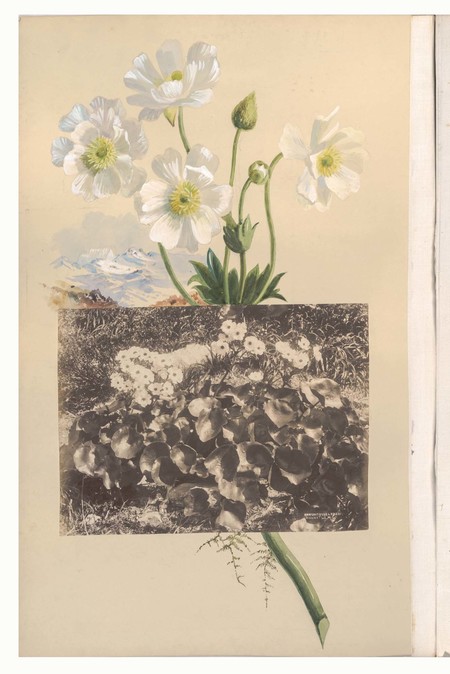
Margaret Stoddart Mount Cook Lilies. Album 2, Canterbury Museum, 2015.115.83-84, p.21
Mount Cook Lilies
On this page, Margaret placed a photograph of Mount Cook lilies, which is combined in a highly original way with her painting of the plant, and a background of snow-capped mountains. The flowers are captured in the clear light, and the delicate white petals shine from the page. When Margaret was a young woman, she completed numerous paintings of New Zealand’s native flora. Her personal album, which was made for the perusal of her family and friends at home, provides a fascinating glimpse of the artist’s adventurous travels, and an insight into her youthful aspirations.
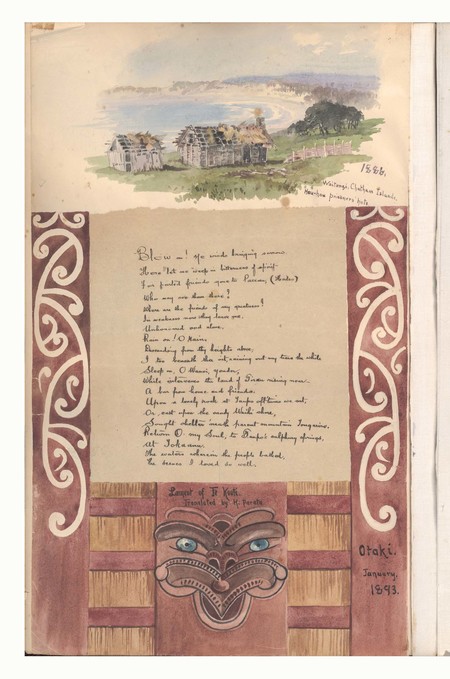
Margaret Stoddart The prisoners’ huts on Orea flat, overlooking Waitangi Bay, Chatham Islands, 1886 (above) with the Lament of Te Kooti, translated by H. Parata at Ōtaki, January 1893. Album 2, Canterbury Museum, 2015.115.3-4, p.1
The prisoners’ huts on Orea flat, overlooking Waitangi Bay, Chatham Islands, 1886 (above) with the Lament of Te Kooti, translated by H. Parata at Ōtaki, January 1893
On 19 April 1886, Margaret travelled to the Chatham Islands, where she stayed for over a year painting the landscape and indigenous flora. This drawing in her album depicts the huts on Orea flat overlooking Waitangi Bay, where the Māori leader and prophet Te Kooti had suffered unjust imprisonment and exile. In 1893, Margaret added a sheet inscribed with verses from the Lament of Te Kooti translated by H. Parata. These were framed within a painted border in the hammerhead shark design that could be seen on the kowhaiwhai panels of Rangiātea, the great Māori church built at Ōtaki.
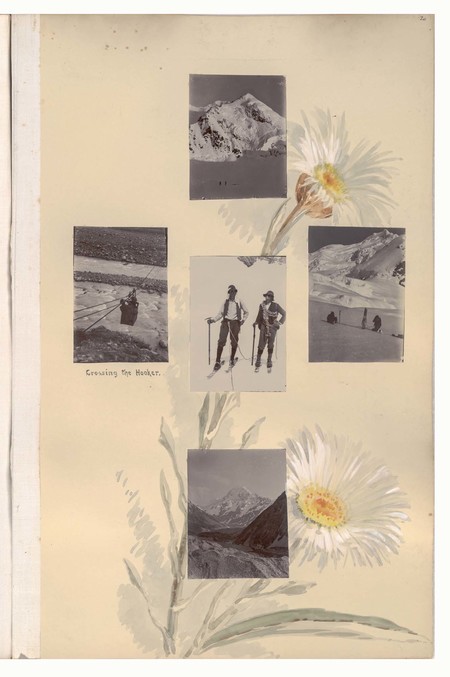
Margaret Stoddart Crossing the Hooker. Album 2, Canterbury Museum, 2015.115.77-82, p.20
Crossing the Hooker
These photographs come from the attempted ascent of Mount Cook, made in November 1893 by celebrated mountaineers Marmaduke Dixon, George Mannering and Tom Fyfe. This was the first expedition to use skis as a means of combatting the snow-covered crevasses. The skis had been ingeniously constructed from the blades of a harvester by Dixon, the brother of Rosa Dixon (later Spencer Bower), and a close companion of Margaret around this time. He is standing in the foreground of the photograph in the centre, which is crowned with a painting of the mountain daisy, a plant that flowers in spring and early summer.
Related reading: Watercolour, Travel, In the Vast Emptiness, Margaret Stoddart: Nature's Artist
Notes
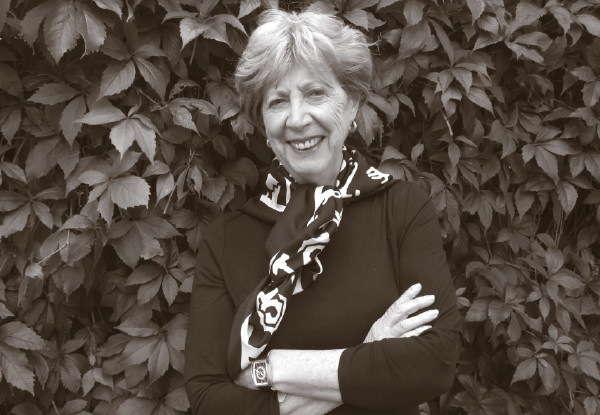
Julie King, 1945–2018
It was with much sadness that the staff of Christchurch Art Gallery Te Puna o Waiwhetū heard of the sudden death of local art historian Julie King in early December. Julie had developed a close relationship with the Gallery over the years, not only as a curator, researcher, writer, speaker and key member of the Friends of Christchurch Art Gallery, but also as a regular visitor to exhibitions, talks and events.
Exhibition
Olivia Spencer Bower: Views from the Mainland
A selection of watercolours by one of Canterbury’s most treasured artists.
Artist Profile
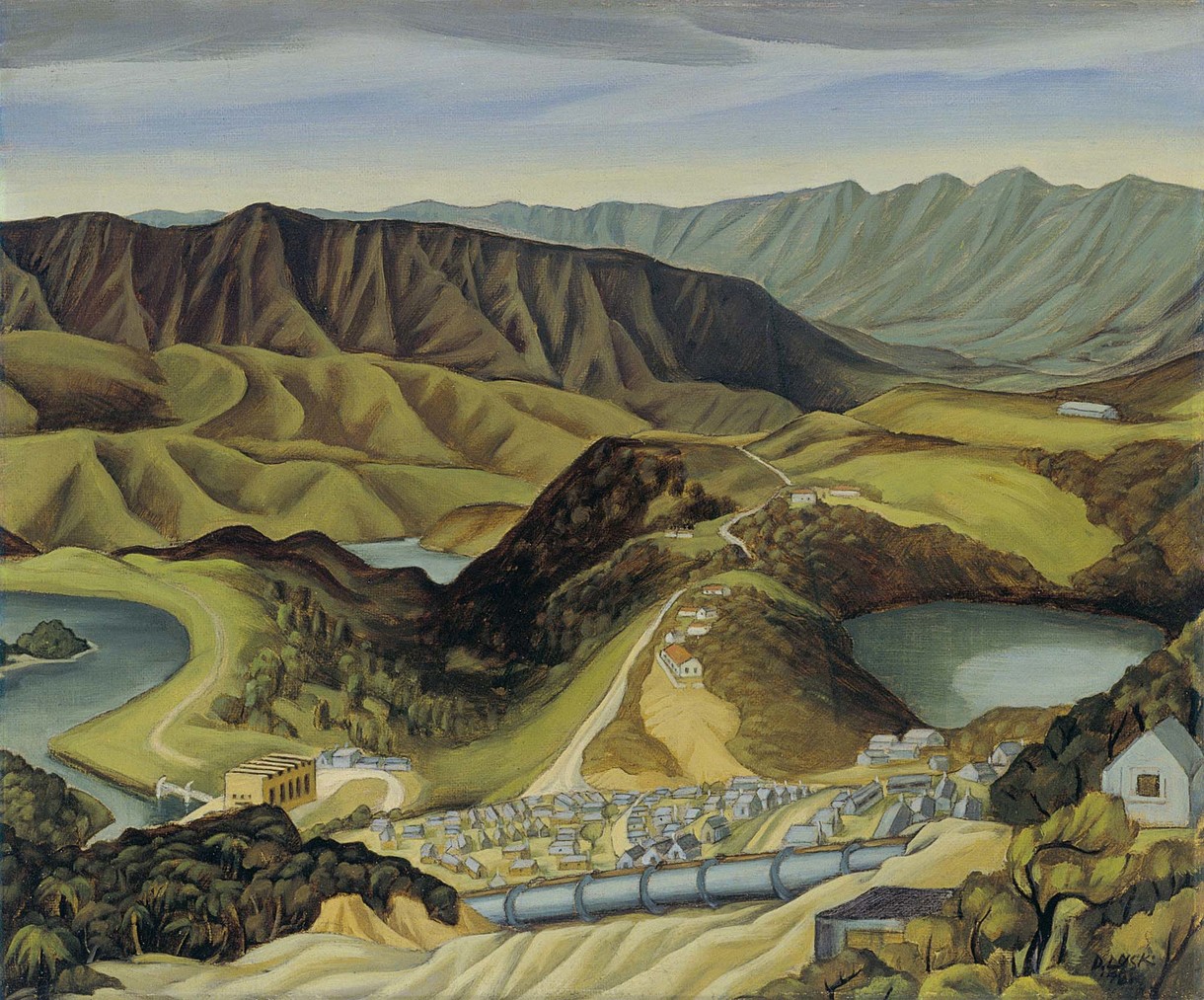
Doris Lusk: An Inventive Eye
In the strange, stunned afterlife that ticked slowly by in the first few years following Christchurch’s February 2011 earthquake, a curious note of recognition sounded through the shock and loss. As a massive programme of demolitions relentlessly hollowed out the city, many buildings were incompletely removed and lingered on for months as melancholy remains – stumps abandoned in a forlorn urban forest. Hideous, sculptural, beautiful; they bore compelling resemblance to a body of paintings created in the city more than three decades earlier.
Exhibition
Untitled (Bathers)
Séraphine Pick's lush watercolour offers a utopian vision in the car park elevator.
Notes
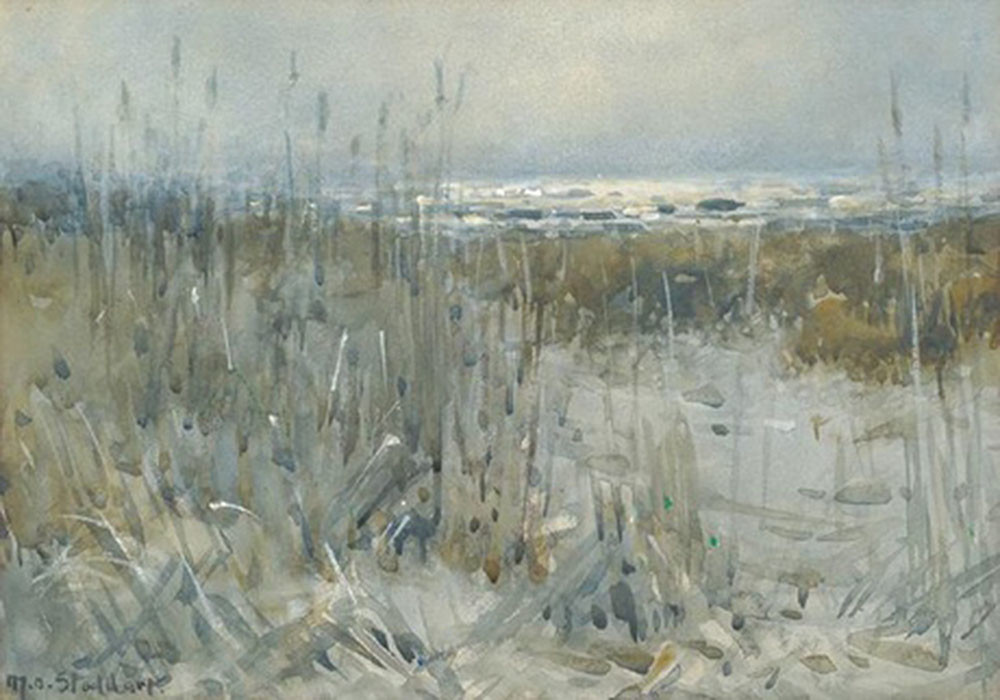
New Brighton by Margaret Stoddart
This article first appeared as 'Stoddart: an artist for all seasons' in The Press on 17 November 2015.
Exhibition
Nature's Artist: Margaret Stoddart
The dazzling watercolours of an adventurous and trailblazing Canterbury artist.
Notes
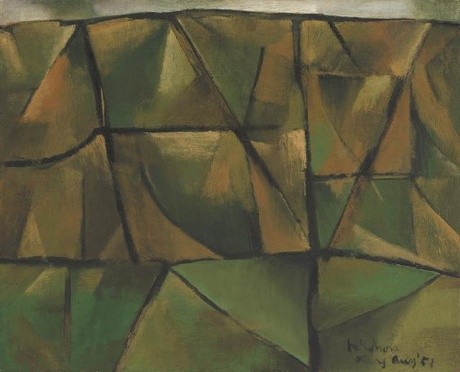
Canterbury Landscape by Colin McCahon
In 2014 we purchased an important landscape work by Colin McCahon. Curator Peter Vangioni speaks about this new addition to Christchurch Art Gallery’s collection.
Notes
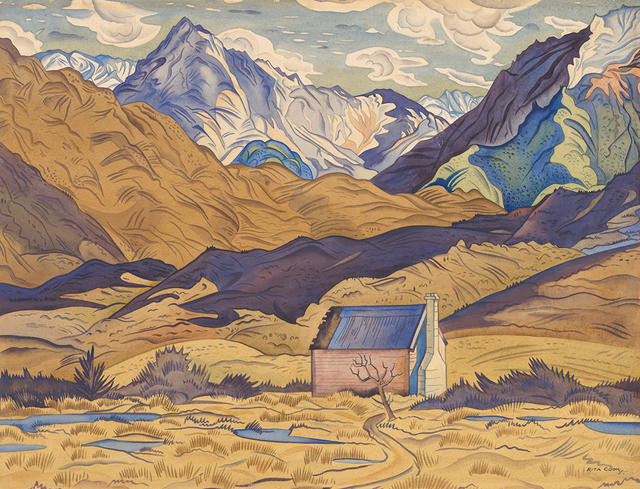
Mountains, Cass by Rita Angus
This article first appeared as 'The wonders of waterolours' in The Press on 11 August 2015.
Collection
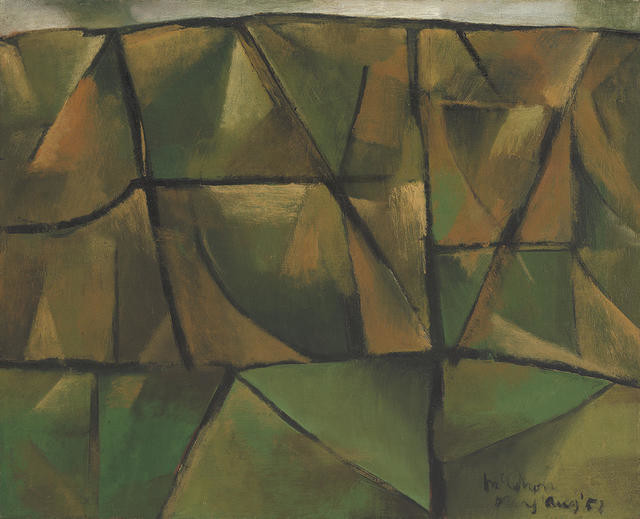
Colin McCahon Canterbury Landscape
'Pākihi is a word for a place that is bare or without trees. The Pākehā surveyors called these cleared areas parkee from the Māori word for no trees, pākihi. Kā Pākihi-Whakatekateka-A-Waitaha: the treeless place, the joyous strutting march through the treeless land of south Canterbury, Waitaha – that’s the old name for the Canterbury Plains.' —Sir Tipene O’Regan
(He Rau Maharataka Whenua: A Memory of Land, 17 September 2016 – 18 February 2017)
Notes
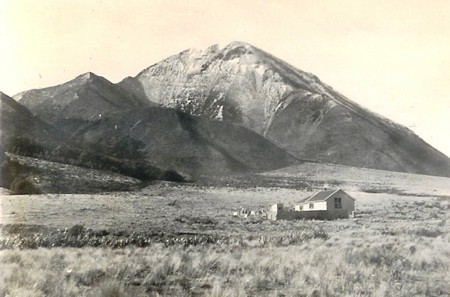
100 years of the Cass field station
Last weekend the University of Canterbury Biology Department celebrated the 100th anniversary of the field station at Cass with a symposium on Cass followed up with a field trip to the station.
Notes
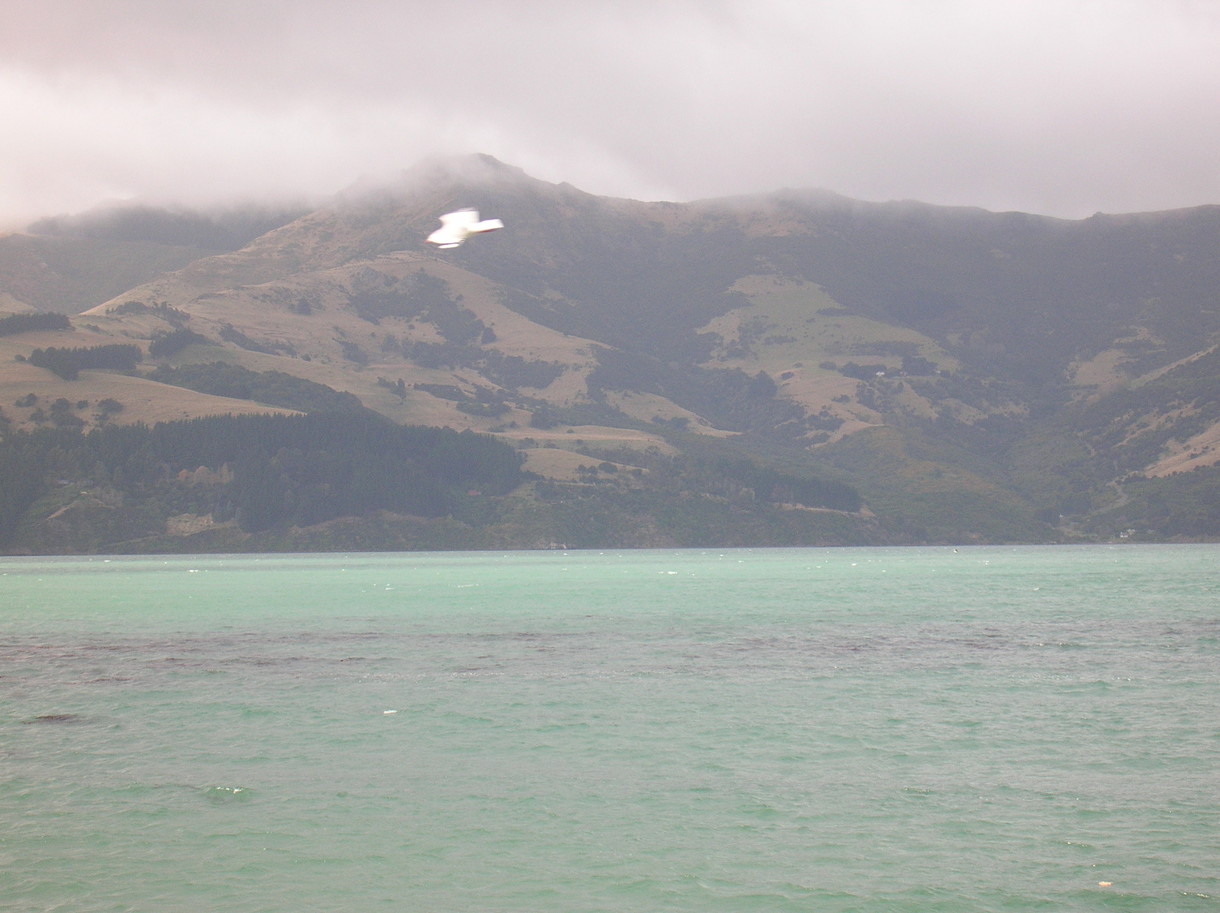
Wainui - to the west of the long harbour
"I like Wainui, quaint, charming, rather like a Pieter Bruegel subject with the haymaking in progress." Rita Angus to Douglas Lilburn, 1943
Notes
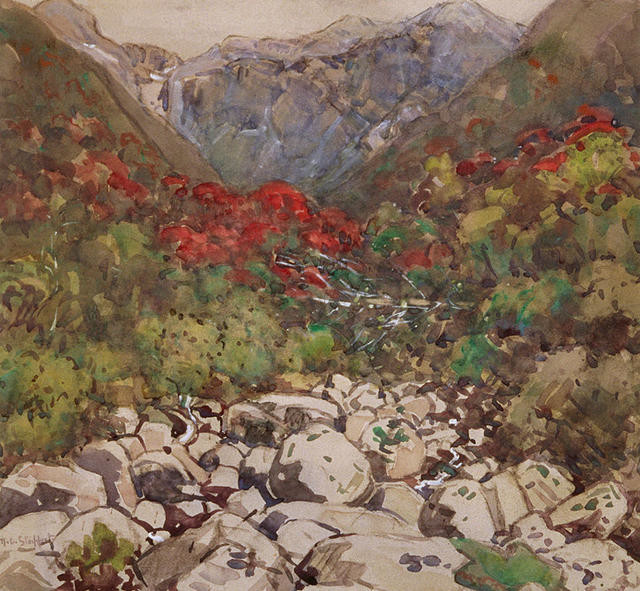
An Otira stream (also known as Mountain Rata) by Margaret Stoddart
This article first appeared as 'Otira colour captured in all its summer glory' in The Press on 28 February 2014.
Collection
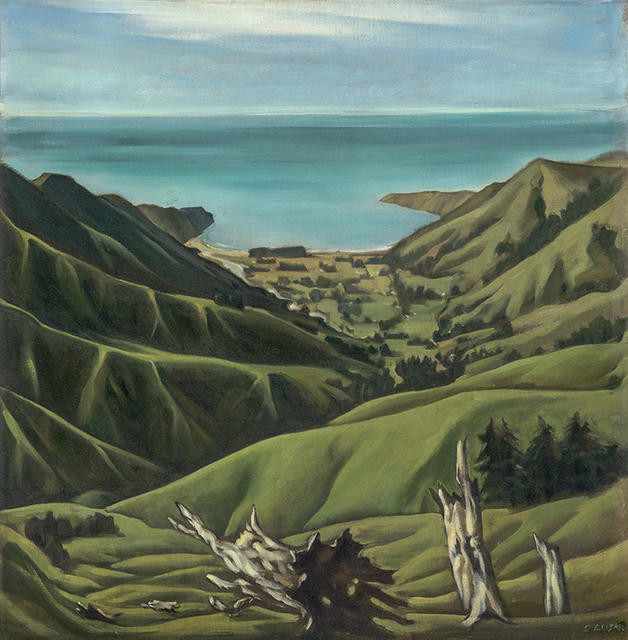
Doris Lusk Okains Bay, Banks Peninsula
'Now, the original name of Okains Bay is Kā Awatea. It’s an old settlement area, the old kāika [village] on the peninsula – and of course a place of mahika kai [food gathering], a zone receiving or exploiting the treasure left around the peninsula by Marokura who endowed the place with all things growing in the sea: fish, seaweeds, shellfish and so on.
'The region was all part of the work of Tu-Te-Raki-Whanoa, the atua [demi-god] who shaped the land, the engineer, the repairer of the wrecked waka [canoe] that came to be known as Te Waipounamu [the South Island]. When Tu-Te-Raki-Whanoa finished on the east coast, he went west to the Paparoa. There he created his first valley, Ka Māwheranui o Ka Kuha o Tu Te Rakiwhanoa, which means the river that runs to its sea, at Greymouth. His last big challenge was to become Fiordland. There he was assisted by Hine-Nui-Te-Pō – this was before she became the Mother who gathers in the dead. Tu-Te-Raki-Whanoa was the re-shaper, the salvager; Hine-Nui-Te-Pō was like an adorner, she worked with him as an assistant.
'When the Pākehā arrived, much of the peninsula was heavily forested with Podocarp. You can still see old fossilised tōtara stumps lying all around the tops of the hills. As I understand it, Christchurch was built off those forests.' —Sir Tipene O’Regan
(He Rau Maharataka Whenua: A Memory of Land, 17 September 2016 – 18 February 2017)
Collection
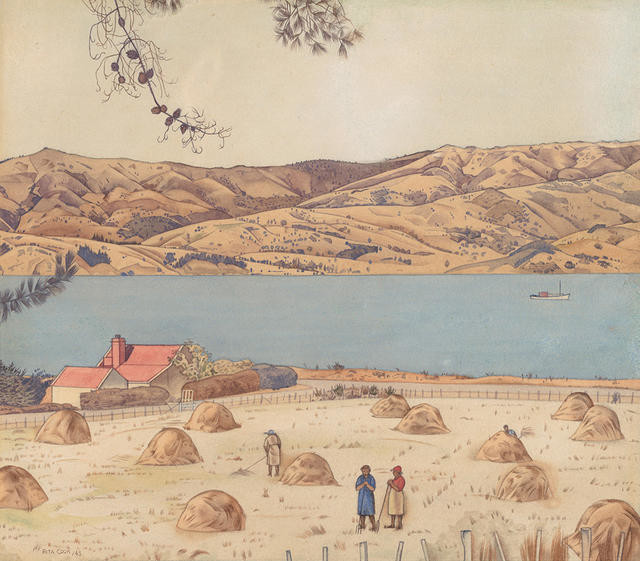
Rita Angus Haycocks, Wainui
'What makes Wainui significant, apart from its status as a mahika kai [food gathering area] for mussels and karengo [an edible seaweed], is that it sits beneath Tuhiraki [a mountain on Banks Peninsula, across the harbour from Akaroa]. It’s the beginning of the South Island’s traditional history. The metaphor is used that the atua [demi-god] Rākaihautū is striking his kō [digging stick] named Tuhiraki into the ground, creating, making, discovering the lakes. The furthest one south he creates is Lake Whakatipu Waitai, also known as Lake McKerrow, at the top end of Fiordland. Rākaihautū comes inland again and journeys up the eastern side of the island where he meets up with his son Rokohuia – I think around Waihao in south Canterbury at Wainono Lagoon, one of the historic hāpua [lagoons] of Kāi Tahu. Father and son are then joyously reunited to the settlement of Akaroa, which they developed. When they get there, Rākaihautū places his kō across the ridge of the hill above Wainui and changes the name to Tuhiraki – and it’s been a treasured name ever since. The French came and called it Mount Bossu, the hunchback; the hunch is the foot of the kō. The renaming has been attended to now.
'This is the base below Tuhiraki [also known as Mount Bossu]. It’s a mahika kai [food gathering area]. What’s important is the narrative in the hill. From Akaroa, you look across to Wainui, all the way along the peninsula and out over the heads. This is traditionally the centre of the evolution of Waitaha occupation [the Waitaha were an early people who occupied the South Island prior to the Kāti Māmoe and then Kāi Tahu people]. The march of Rākaihautū [the first ancestor of the Waitaha people] and his son Rokohuia gives the ancient name of Canterbury: Kā Pākihi-Whakatekateka-A-Waitaha, the strutting joyous march of Waitaha.' —Sir Tipene O’Regan
(He Rau Maharataka Whenua: A Memory of Land, 17 September 2016 – 18 February 2017)
Collection
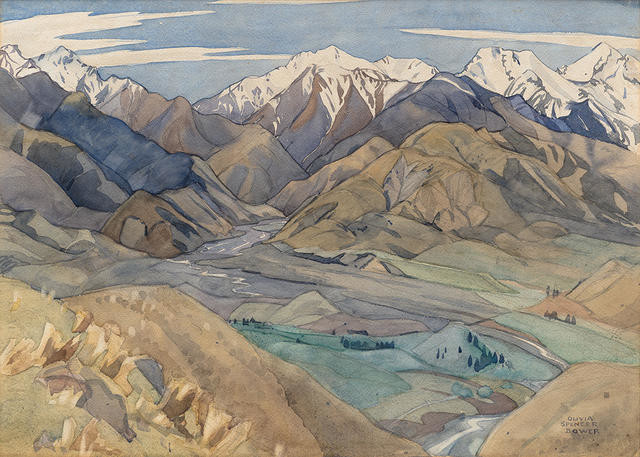
Olivia Spencer Bower Kaikoura Country
'The Māori name for Kaikōura is Te Ahi Kaikōura o Tama Ki Te Raki, the place where Tama Ki Te Raki [a mythical exploring ancestor] cooked his crayfish. What’s significant is the Kaikōura Ranges. The south Seaward Kaikōuras were named The Lookers On Mountains by Captain James Cook, so called because when Cook was coming down the coast some twelve miles offshore he encountered several double canoes out fishing. He kept trying to induce them to come alongside the ship, but every time the ship came towards them they paddled away and just sat watching – so he called the mountains behind them The Lookers On.
'Another interesting thing about the mountains of the Kaikōura territory: you’ve got Te Parinui o Whiti [the White Bluffs], one of Kāi Tahu’s marker boundaries, and the highest peak, Tapuae o Uenuku. Tapuae means footsteps, the sacred footsteps of Uenuku [a prominent Māori ancestor]. Uenuku is said to have been put ashore from the Uruao or Uruaokapuarangi canoe [said to have come from Hawaiki, led by Rākaihautū], and he climbed the mountain and named it Te Tapuae o Uenuku. The mountains behind have many different names; most of the Seaward Kaikōuras have Māori names. Behind them is the Awatere valley, inland; Tapuae o Uenuku is at the head of those valleys.' —Sir Tipene O’Regan
(He Rau Maharataka Whenua: A Memory of Land, 17 September 2016 – 18 February 2017)
Collection
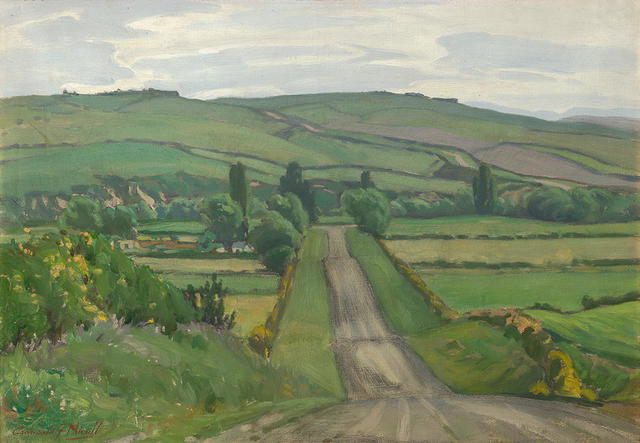
Archibald Nicoll A Canterbury landscape
Having lost his leg while fighting on the Somme during World War I, Archibald Nicoll was confined to painting landscapes in close proximity to where he was able to drive. This is why so many of his landscapes have roads as a central motif. Rather than a hindrance, however, Nicoll put his car to good use and revelled in the freedom it offered, driving all over Canterbury to paint. He would often combine painting excursions with family holidays. The scene in this work is thought to be Balcairn Downs inland from the town of Amberley in North Canterbury.
In the vast emptiness, 8 January - 21 August 2016
Notes
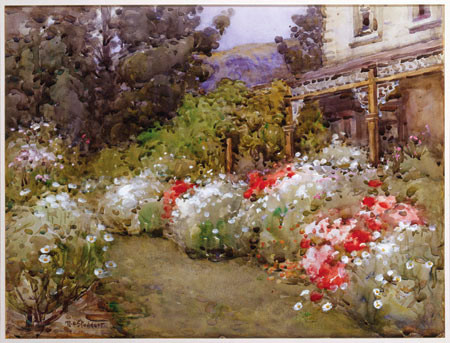
Godley House, Diamond Harbour by Margaret Stoddart
This article first appeared as 'Stoddart's summer' in The Press on 15 February 2013.
Notes

CASS
This week 77 years ago Rita Angus visited Cass on a sketching holiday with Louise Henderson and Julia Scarvell that resulted in several paintings including the Christchurch Art Gallery's Cass.
Notes
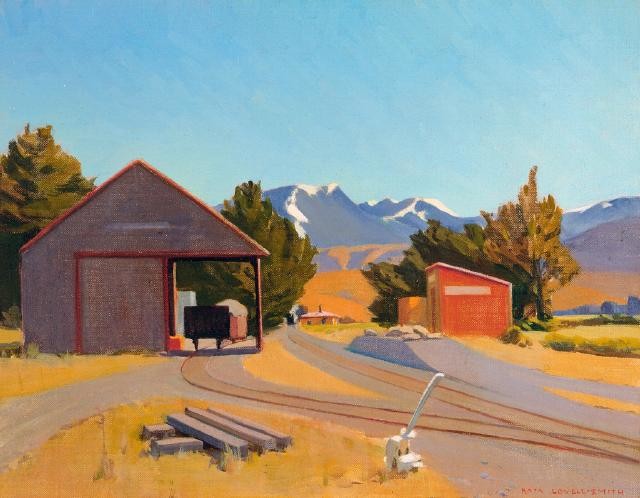
CASS
André Hemer's exhibition CASS is well worth a visit if you are near the Christchurch Art Gallery's space above NG on Madras street.
Notes
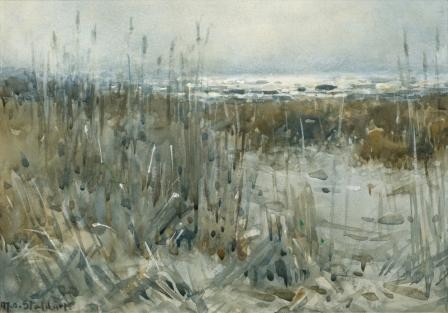
Margaret Stoddart: born Diamond Harbour 3 October, 1865.
While the Gallery remains closed to the public the permanent collection continues to grow with several generous gifts and bequests being received recently.
Notes
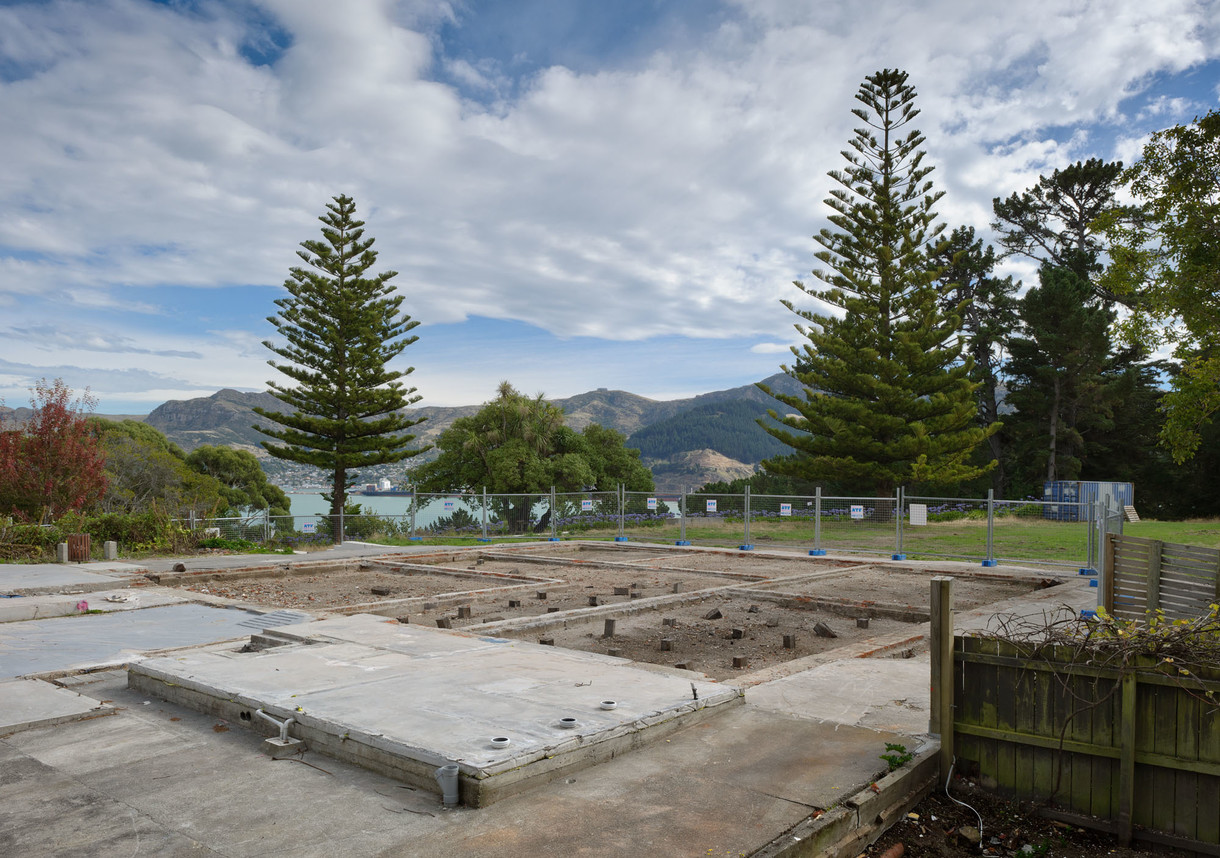
Diamond that shines
The ruins of Diamond Harbour's Godley House may have finally been removed but the stunning sparkling views out across Lyttelton Harbour remain.
Notes
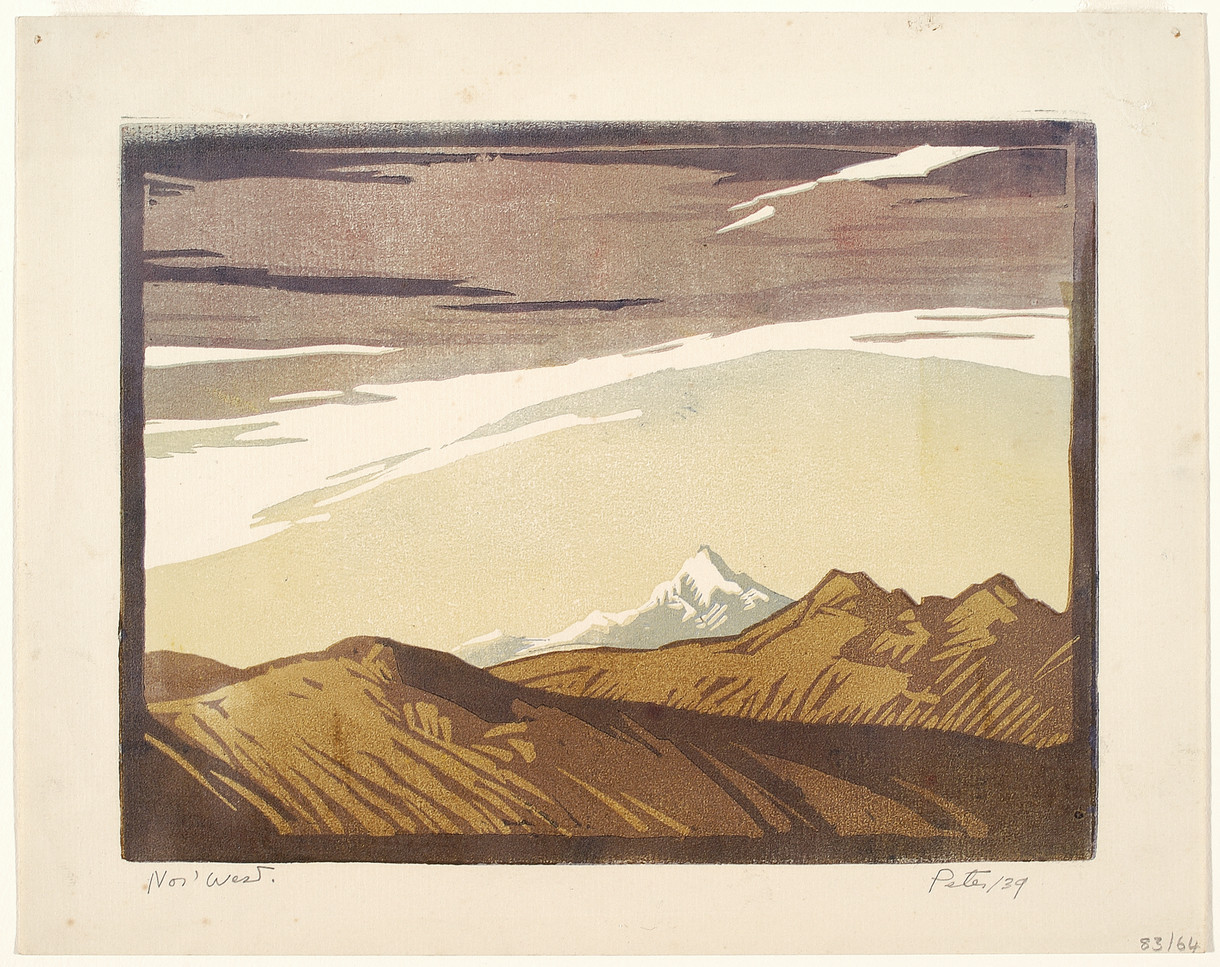
Another nor’wester descends on Canterbury
Some people fear them, others revel in the unforgiving dry heat – love them or hate them the legendary Canterbury nor'wester is one of the defining features of this region in the summer months and there is a real doozy blowing outside at the moment.
Notes
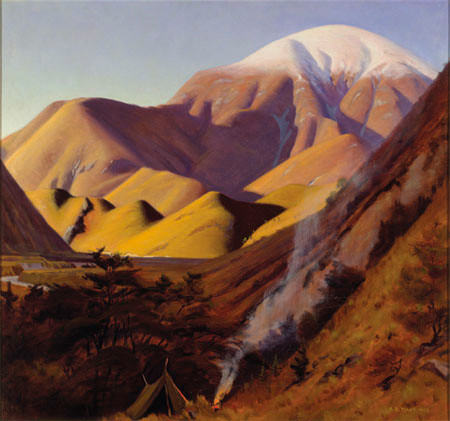
Heart in the high country: Austen Deans (1915 - 2011)
For Austen Deans, OBE, painting was an expression of his love of the outdoors and, in particular, the Canterbury high country.
Notes
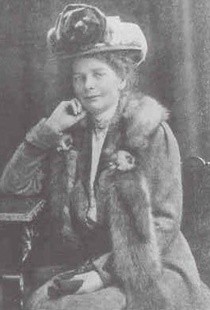
Happy birthday Margaret
Margaret Stoddart was born on this day in 1865 at Diamond Harbour. Here she is in 1909:
Collection
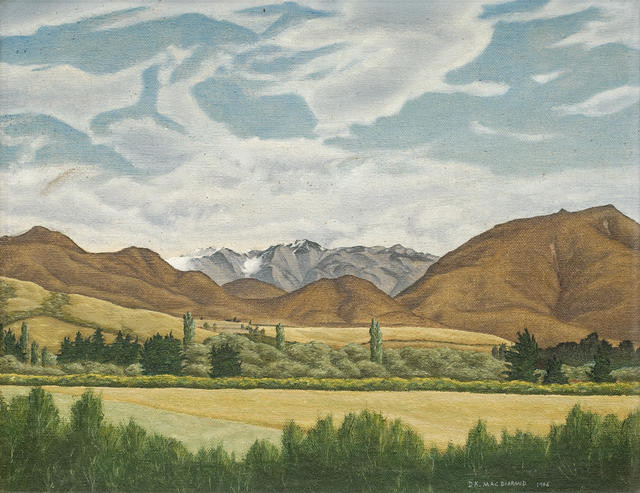
Douglas MacDiarmid Hills from Annat
After a stint at the Wigram Air Force Base in Christchurch with the Royal New Zealand Air Force during World War II, Douglas MacDiarmid found the need to get away to the country for a well-earned sketching holiday. It was here that Hills from Annat was completed. He said of this time:
'I had been able to lay my hands on the last covered wagon in the South Island, also to hire a fine white mare. Off we drove in a flourish then for a month, Blanche, Buddy, me. We were headed for the rolling country where the Canterbury Plains are not yet hills finishing as Alps. At no more than a clip-clop pace it is possible to approach with peaceful observation, meditation merging as no motor vehicle will allow.'
In the vast emptiness, 8 January - 21 August 2016
Notes
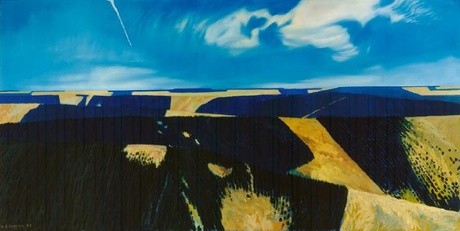
Sutton high-fives McCahon
Nothing made it into a W.A. Sutton painting by accident, and the white line that rises diagonally through the sky in Plantation Series II is no exception.
Collection
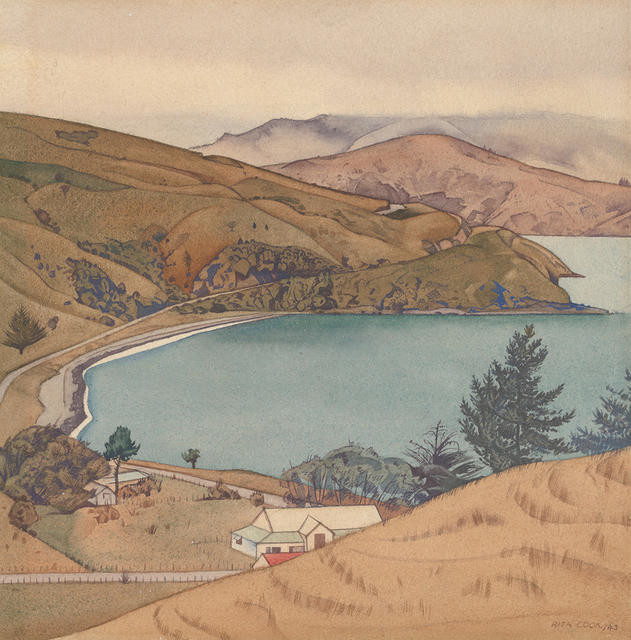
Rita Angus Wainui, Akaroa
'What makes Wainui significant, apart from its status as a mahika kai [food gathering area] for mussels and karengo [an edible seaweed], is that it sits beneath Tuhiraki [a mountain on Banks Peninsula, across the harbour from Akaroa]. It’s the beginning of the South Island’s traditional history. The metaphor is used that the atua [demi-god] Rākaihautū is striking his kō [digging stick] named Tuhiraki into the ground, creating, making, discovering the lakes. The furthest one south he creates is Lake Whakatipu Waitai, also known as Lake McKerrow, at the top end of Fiordland. Rākaihautū comes inland again and journeys up the eastern side of the island where he meets up with his son Rokohuia – I think around Waihao in south Canterbury at Wainono Lagoon, one of the historic hāpua [lagoons] of Kāi Tahu. Father and son are then joyously reunited to the settlement of Akaroa, which they developed. When they get there, Rākaihautū places his kō across the ridge of the hill above Wainui and changes the name to Tuhiraki – and it’s been a treasured name ever since. The French came and called it Mount Bossu, the hunchback; the hunch is the foot of the kō. The renaming has been attended to now.
'This is the base below Tuhiraki [also known as Mount Bossu]. It’s a mahika kai [food gathering area]. What’s important is the narrative in the hill. From Akaroa, you look across to Wainui, all the way along the peninsula and out over the heads. This is traditionally the centre of the evolution of Waitaha occupation [the Waitaha were an early people who occupied the South Island prior to the Kāti Māmoe and then Kāi Tahu people]. The march of Rākaihautū [the first ancestor of the Waitaha people] and his son Rokohuia gives the ancient name of Canterbury: Kā Pākihi-Whakatekateka-A-Waitaha, the strutting joyous march of Waitaha.' —Sir Tipene O’Regan
(He Rau Maharataka Whenua: A Memory of Land, 17 September 2016 – 18 February 2017)
Notes
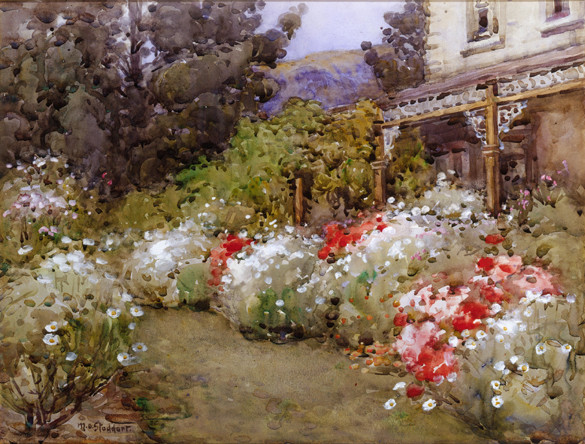
Godley House
The Press announced today that another iconic Banks Peninsula building is to be demolished, Godley House at Diamond Harbour.
Interview
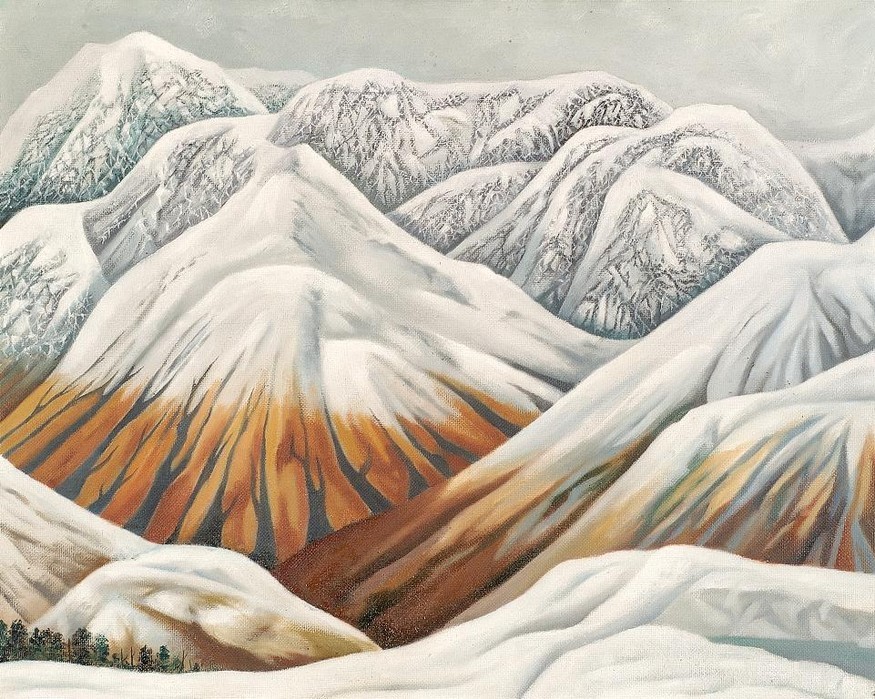
Talking Bensemann
Leo Bensemann was one of the most respected figures in the Christchurch arts scene, and played a pivotal role in influential arts collective The Group. Always something of an odd-man-out, he produced a large body of work across several different disciplines before his death in 1986. In an attempt to get a fuller picture of the man himself, Gallery director Jenny Harper spoke to two artists who knew him well, John Coley and Quentin MacFarlane.
Artist Profile
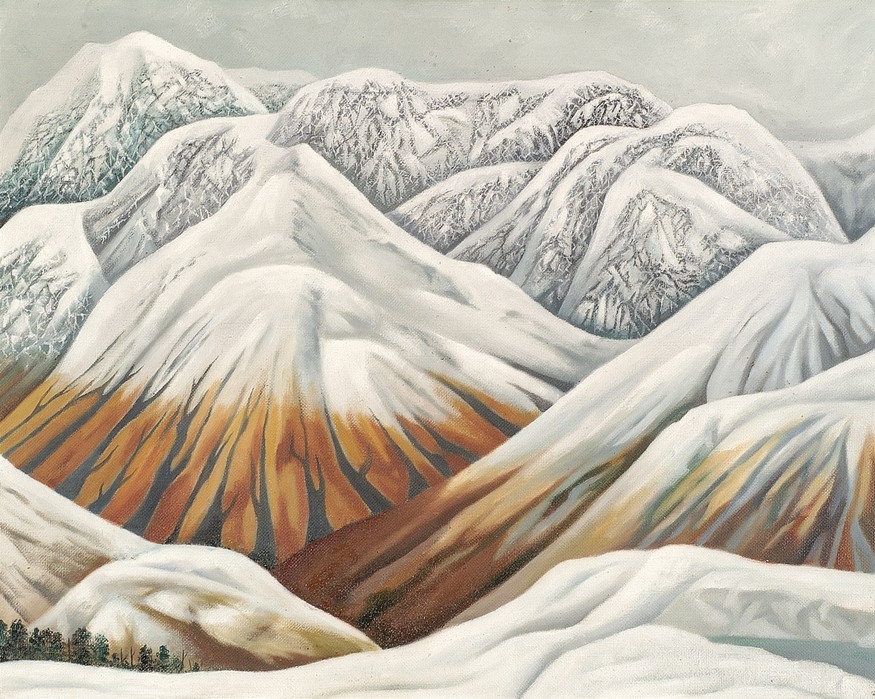
Leo Bensemann: an art venture
Leo Bensemann (1912–1986) was a pivotal figure bridging the worlds of literature and visual arts – a go-between like no other. Peter Simpson is an authority on this distinctive artist.
Exhibition
W.A. Sutton: Watercolours of Italy
An exhibition featuring a selection of works from Bill Sutton's 1973–4 Italian sojourn, highlighting his exquisite skill as a draughtsman and watercolourist.
Exhibition
Picturing the Peninsula
A selection of works by some of New Zealand’s most significant historical and contemporary artists responding to the unique landscapes of Banks Peninsula Te Pataka o Rakaihautu.
Collection
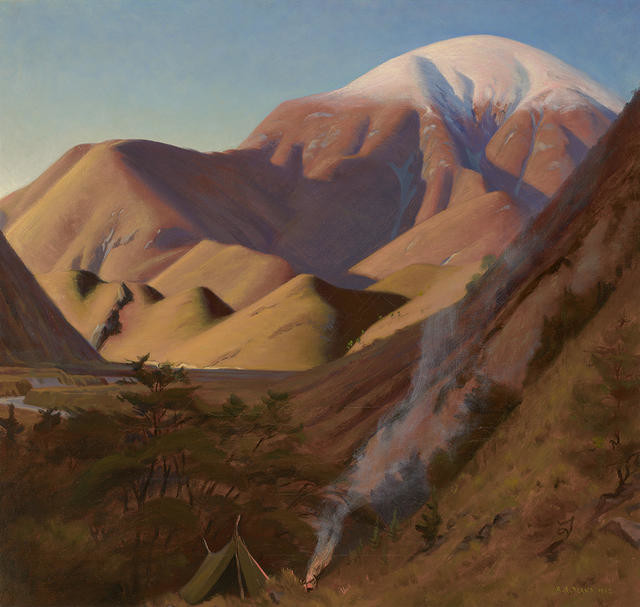
Austen A Deans Camp in the Kowai
For Austen Deans, painting was an expression of his love of the outdoors and, in particular, the Canterbury high country. Born at Riccarton House, Christchurch in 1915, he grew up on the family farm near Sheffield in North Canterbury (and near Kowai, the subject of this 1952 painting). He trained at the Canterbury College School of Art between 1934 and 1938, where he continued his interest in the outdoors through membership of the College tramping club. He once said that he had 'rather wished to be a mountain guide', but his mother dissuaded him from that early ambition. Though he loved sculpture, he specialised in painting because it allowed him to work outdoors rather than being tied to a city studio. Deans was the last of a generation of painters, which also included Doris Lusk and Bill Sutton, whose work was strongly focused on the Canterbury landscape. He is most well-known for his paintings of Mt Peel and the surrounding area, where he lived and worked for over 60 years. 'It was really my attraction to the mountains that started me painting' he said, 'and it's never left me'.
(Turn, Turn, Turn: A Year in Art, 27 July 2019 – 8 March 2020)
Collection
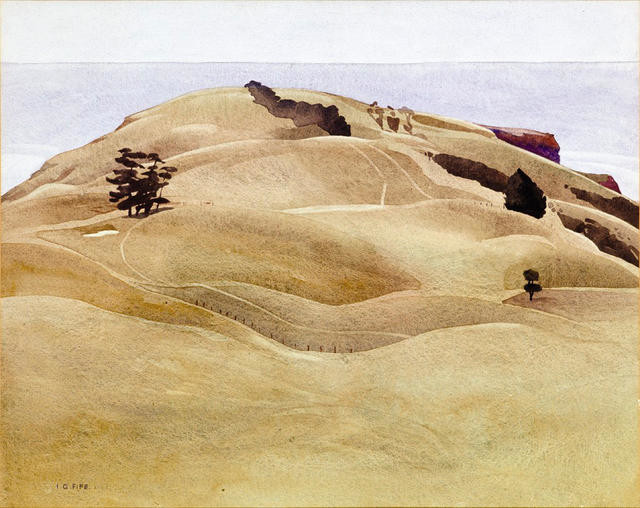
Ivy Fife The Long Lookout
'Tu-Te-Raki-Whanoa, the son of Aoraki, is the atua [demi-god] who shapes the wrecked waka to ready it for people. His first great task is to defeat the south-easterly winds roaring along the side of the wreck. He invents peninsulas. He rakes all the rubbish of the wreckage and piles it up like a gigantic break water. Thus you have the Canterbury Plains and a sheltered place for his next invention, Whakaraupō [Lyttelton Harbour] and Akaroa Harbour. He then depresses his heel and creates Waihora [Lake Ellesmere], later claimed by the exploring ancestor, Rākaihautū, as Te Kete ika o Te Rākaihautū [the fish basket of Rākaihautū].' —Sir Tipene O’Regan
(He Rau Maharataka Whenua: A Memory of Land, 17 September 2016 – 18 February 2017)
Collection
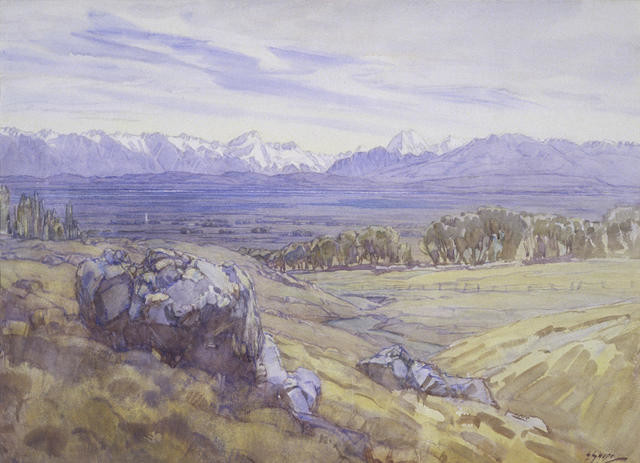
Esther Studholme Hope Mackenzie Country
The viewpoint Esther Hope chose for this work allowed her to show the vast expanse of the Mackenzie Country, which stretches out before the viewer towards the Southern Alps. This region was a favourite subject of Hope’s, one that she returned to throughout her career.
She said that “this land is a part of me … I have never regretted my choice of environment [and] have always felt a strong feeling of primitiveness [here].” Hope’s mature style is seen here, with broad wet washes of colour confidently used.
Hope was born near Geraldine, South Canterbury. She was first introduced to painting through her mother, Emily Studholme, an accomplished amateur artist. She also took lessons from Edwyn Temple and Margaret Stoddart. In 1912 Hope left New Zealand for England where she enrolled at the Slade School of Art, London. In 1919 she returned to New Zealand, married Henry Norman Hope and settled at the Grampians Station in the Mackenzie Country.
Collection
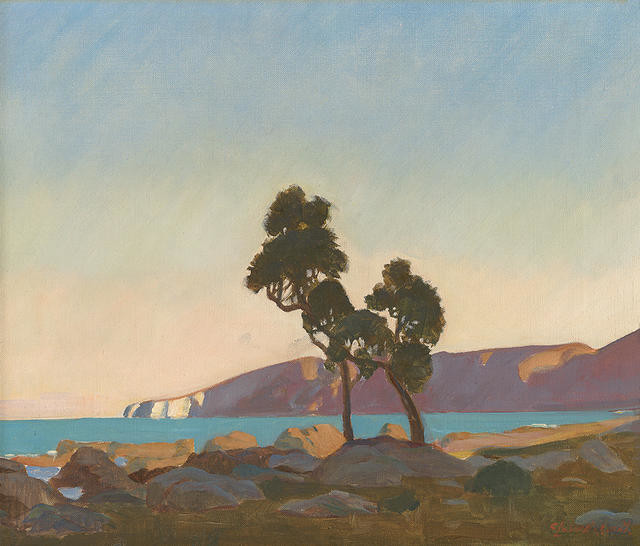
Colin S. Lovell-Smith Evening
With the arrival of the motorcar, Otama-a-kura / Goose Bay (south of Kaikōura) became a popular camping spot for summer visitors. Christchurch-born couple Colin and Rata Lovell-Smith stayed there regularly throughout the 1930s, joining the throng heading north each season to camp, fish and relax – and, for these two, to paint. The results of Colin’s labours include this pared back evening coastal scene at Haumuri Point; and a painterly record of civil engineering works disturbing the usually tranquil Otumatu (near Goose Bay) during the completion of the Main Trunk Line in 1939.
Collection
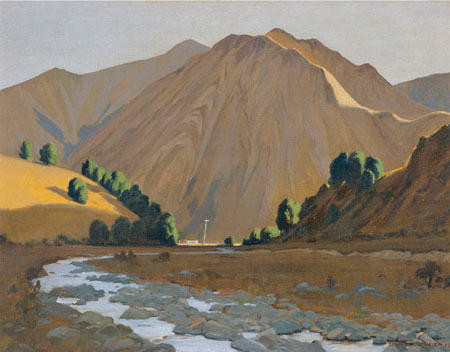
Colin S. Lovell-Smith Sunset, Craigieburn
Colin Lovell-Smith often went on painting trips to this area with his wife Rata, who was also a landscape painter. Craigieburn is in the Southern Alps, about 100 kilometres northwest of Christchurch. Although set beside a small riverbed close to the main road, the painting focuses on the steep eroded slopes of the Craigieburn Range. Lovell-Smith has paid close attention to the landform details, capturing the distinctive qualities of the Canterbury mountain region. Shades of ochre are subtly orchestrated with the soft grey of the predominant greywacke rocks. Born in Christchurch, Lovell-Smith studied at the Canterbury College School of Art then worked for his father’s printing business. During World War I Lovell-Smith was with the Royal Engineers on the Balkan Front and was subsequently awarded the Serbian Gold Medal of Merit for his work. On his return to Christchurch in 1919 he taught, first at St Andrew’s College, then at the School of Art, of which he was Director from 1947 until his death.
Collection
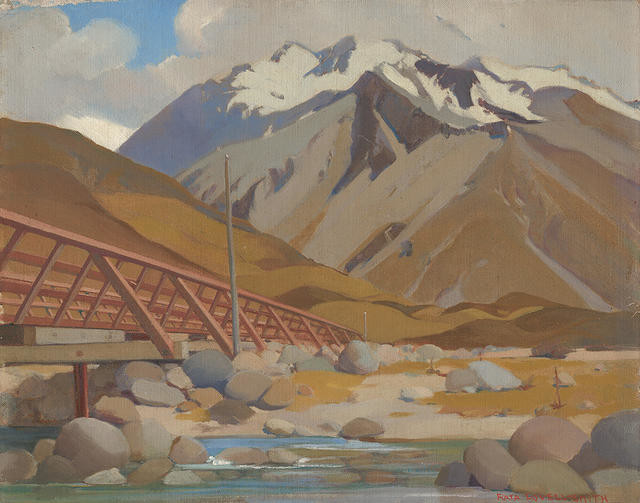
Rata Lovell-Smith Bridge, Mt Cook Road
'This is the Mount Cook Road, and there are many bridges on that road. The people of Ngāi Tūāhuriri would go inland into the McKenzie [just below where this location is painted] for hunting high country weka [native woodhen] with dogs. They'd carry their empty packs of pōhā [kelp bags to hold preserved birds] with them to the hunting area, catch the weka and process the birds up there. They’d carry the pōhā out, and meet people coming from the south also going up to those high country plains. It was a summer exercise. Towards the end of summer the birds are fat. You preserve them like tītī [muttonbirds] in their own fat.' —Sir Tipene O’Regan
(He Rau Maharataka Whenua: A Memory of Land, 17 September 2016 – 18 February 2017)
Collection
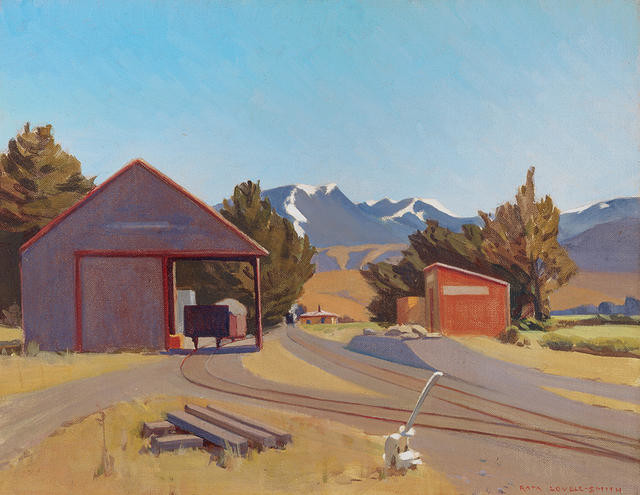
Rata Lovell-Smith Hawkins
The painting shows the railway station at Hawkins, a small farming settlement near Darfield. Rural stations like this were once a common feature on branch lines across the Canterbury Plains. Rata Lovell-Smith chose to paint outside, rather than in the studio, often seeking out isolated rural views. Her works vividly capture the region’s distinctive colours and bright, clear light, and her crisp style is especially well-suited to landscapes with strong structural elements. Here, she deftly conveys a scene full of lines, curves and angles while preserving a sense of the spaciousness of the mountains beyond and the open sky above.
(Perilous: Unheard Stories from the Collection, 6 August 2022- )
Collection
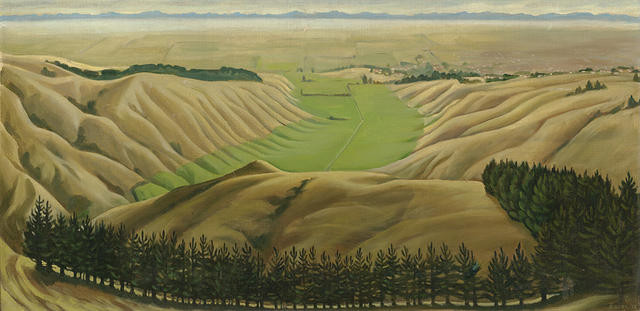
Doris Lusk Canterbury Plains From Cashmere Hills
Doris Lusk’s landscapes often take in an elevated view, placing her at the head of a valley, looking down with hawk eyes across a complex, spreading scene. The whole is surveyed, absorbed and brought together through structural reconfiguration, simplification and reframing, often beneath a distant horizon. Contrasting juxtaposed elements here – dry foothills and green valley, or foreground pines and distant morning haze – are combined to become a generous, contemplative whole. Lusk was part of a circle of artists including Colin McCahon, Rita Angus and Leo Bensemann, and is recognised for having made a distinctive, deeply personal contribution to New Zealand painting.
(As Time Unfolds, 5 December 2020 – 7 March 2021)
Collection
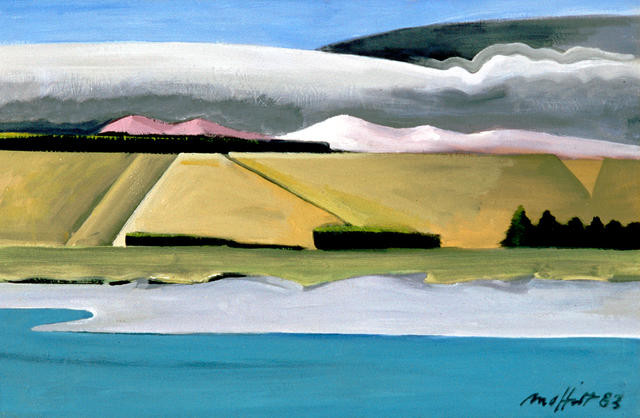
Trevor Moffitt Rakaia Series No. 37
Trevor Moffitt had a deep love for inland Canterbury that was in part fostered by his obsession with fishing. In the mid 1970s he purchased a bach at Lake Clearwater, inland from the Canterbury town of Ashburton. This became his favourite spot to retreat from city life and experience the outdoors. In 1982, after the death of his wife, Alison, Moffitt began the series that this work is from. He said in an interview:
'After Alison died I’d had enough of people, so I went out and painted the Rakaia River series. I had just been emotionally drained. […] The best thing I could do was go off on the weekend and paint the river. I poured all my grief and tears into depicting the waters of the Rakaia.'
In the vast emptiness, 8 January - 21 August 2016
Collection
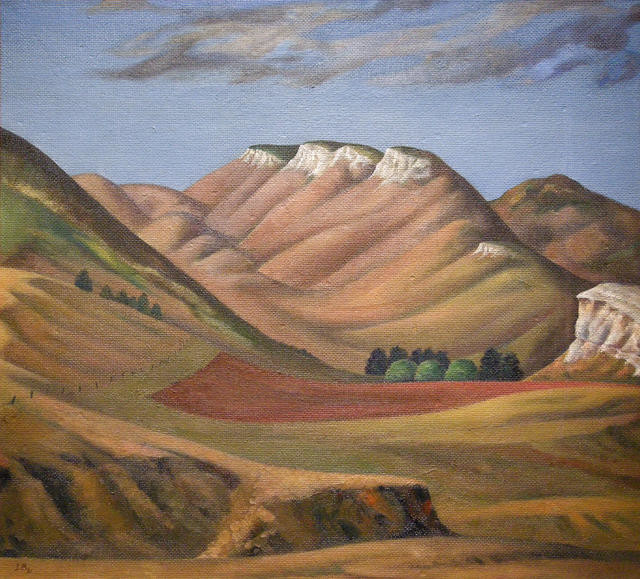
Leo Bensemann Canterbury Spring
In 1930s New Zealand there was wide discussion about what was unique about the New Zealand situation; what it was that made us different from the rest of the world. Artists and writers began exploring ways to identify our national identity. A number of artists began painting the Canterbury High Country, most famously Rita Angus and her landscape painting of the railway station at Cass. One reviewer in 1936 observed that there was a new quality in the landscapes exhibited in Christchurch that seemed ‘to consist in a removal of the romantic mists which used to obscure mountains and the Canterbury countryside generally. The light now is clear and hard, the colours are in flat planes, and the effect is of seeing the country through a gem-like atmosphere. There is also a new romantic standpoint – an insistence on the isolation and brooding loneliness of the hills.’ It’s a statement that certainly rings true with the Canterbury paintings of Rita Angus, Leo Bensemann, Louise Henderson, Rata Lovell-Smith and Bill Sutton.
(March 2018)
Collection
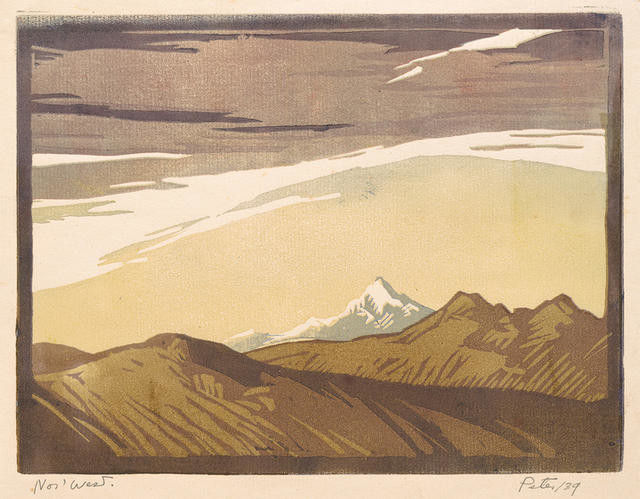
Juliet Peter Nor’west
According to Kāi Tahu, within the story of the creation of Te Waipounamu (the South Island), Aoraki was an atua, or demi-god, who left the home of his father, Raki, in the heavens and voyaged with his brothers to visit Raki’s first wife Poharora o Te Po. They set out to return to his father, but there was a fault in the karakia (prayer) for their return. Aoraki’s canoe – Te Waka o Aoraki – was stranded, and Aoraki and his brothers turned to stone, becoming the mountains of Kā Tiritiri o Te Moana, the Southern Alps.
'This work is interesting because it offers an unusual perspective on Aoraki [Mount Cook] – but Aoraki is full of different perspectives in Kāi Tahu culture. The mountain is, above all, a symbol of our tribal and regional identity. That’s got nothing much to do with its location – although that obviously commands cultural attention – but mainly because of its centrality in the Te Waipounamu creation story. And it is a distinctive creation story, part of a creation myth which has survived here in the remote outskirts of Polynesia while it has been lost at the centre where it came from. Aoraki made us distinctive, and it makes all people distinctive that live under its span. Juliet Peter’s depiction of it is unusual, but every way you look at Aoraki you’ve got a different perspective.' —Sir Tipene O’Regan
(He Rau Maharataka Whenua: A Memory of Land, 17 September 2016 – 18 February 2017)
Collection
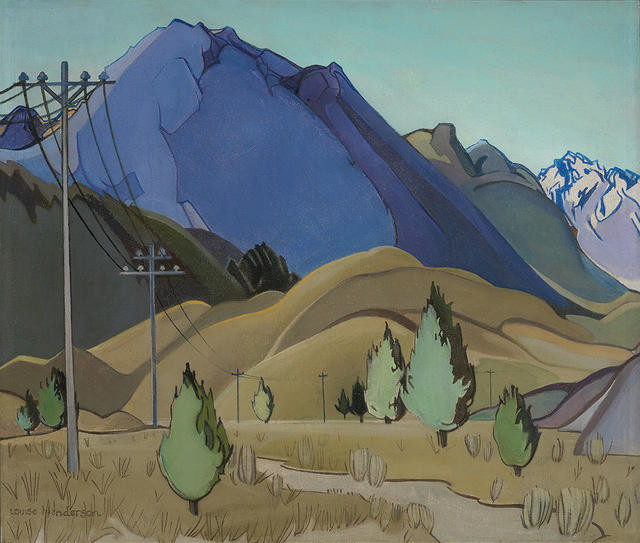
Louise Henderson Plain and Hills
French-born Louise Henderson married a New Zealander and came to Ōtautahi Christchurch in 1925. She relished the freedom of her new life, exploring in and painting the hill country of Te Waipounamu and often sleeping out alone under the stars. In 1936, she undertook a ten-day painting trip to Cass, in the Southern Alps, with her friends Rita Angus and Julia Scarvell. Her translation of that landscape is alive with luminous colour and dynamic movement, capturing jagged ridgelines, undulating hills and the curving lines of telegraph wires. The mountain, its slopes depicted blue with shadow, is called the Pyramid – much easier to look at than to climb.
(Perilous: Unheard Stories from the Collection, 6 August 2022- )
Collection
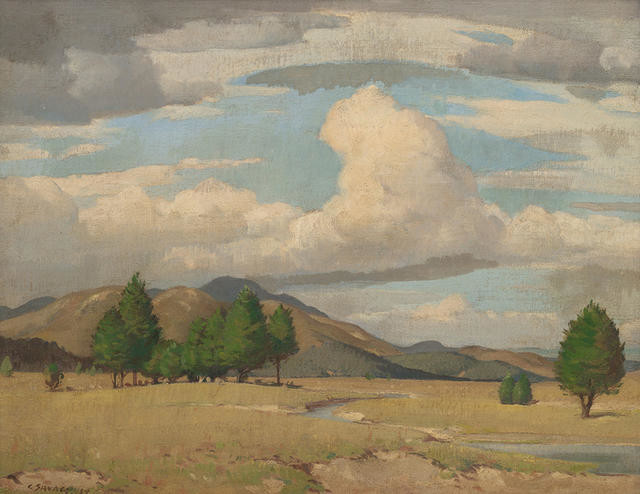
Cedric Savage Summer, Kowai
Kowai Bush is a farming area in the foothills of Central Canterbury, where typically the summers are very hot and dry. Like other Canterbury landscape artists of the 1930s, Cedric Savage was interested in recording the unique features of the Canterbury region. He was essentially a plein air (outdoors) artist concerned with painting directly from nature but in Summer, Kowai he has worked in a careful manner, keeping control over the application of paint. Born in Christchurch, Savage studied at the Canterbury College School of Art. He later studied with Sydney Lough Thompson (1877-1973) and Archibald Nicoll (1886 - 1953). After travelling, he returned to New Zealand in 1933, settling in Christchurch where he became vice-president of the New Zealand Society of Artists. Savage’s eyes were injured during World War II and for the rest of his life he could only paint outdoors. Although he won the Kelliher Art Award in 1962, Savage felt unappreciated in New Zealand and spent many years living away from the country, finally settling in Greece.
Collection
![An Otira Stream [also known as Mountain Rata]](/media/cache/b1/a6/b1a685e39ffb4d405a3f5d7f9ad77aac.jpg)
Margaret Stoddart An Otira Stream [also known as Mountain Rata]
Margaret Stoddart first made the trip along the West Coast Road over Arthur’s Pass and through the Otira Gorge in April 1896, travelling in a hired wagon with several companions. Around 1927 Stoddart completed several watercolours of the gorge including An Otira Stream (also known as Mountain rata). In this work the artist combines her interest in flower painting with landscape to complete a vibrant vision of southern rata in full bloom amongst the rugged Otira terrain. In the summer months of January and February the mountain slopes of the Otira Gorge come alive with the crimson flowers of southern rata.
Collection
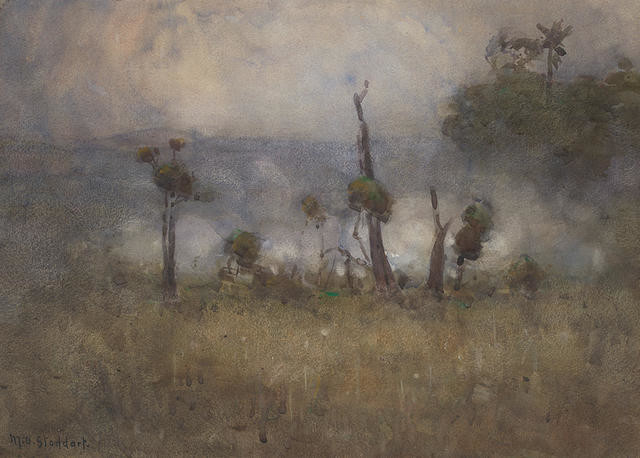
Margaret Stoddart Bush Fire, Paraparaumu
Perhaps the most effective way to clear the native forest that stood in the way of developing farmland was to set fire to it – something poignantly captured here by Margaret Stoddart. The landscape of Paraparaumu, and the Tararua mountain ranges beyond, was home to one of Aotearoa’s most prized birds, the huia. Now extinct, when Stoddart painted this work around 1908, the last official sighting of huia had been recorded a year earlier. Huia were prized for their distinctive tail feathers by Māori and Pākehā, and were relentlessly hunted to extinction in the early 1900s to satisfy a lucrative trade in their skins for stuffed specimens and their beaks for grim jewellery.
Ship Nails and Tail Feathers, 10 June – 22 October 2023
Collection
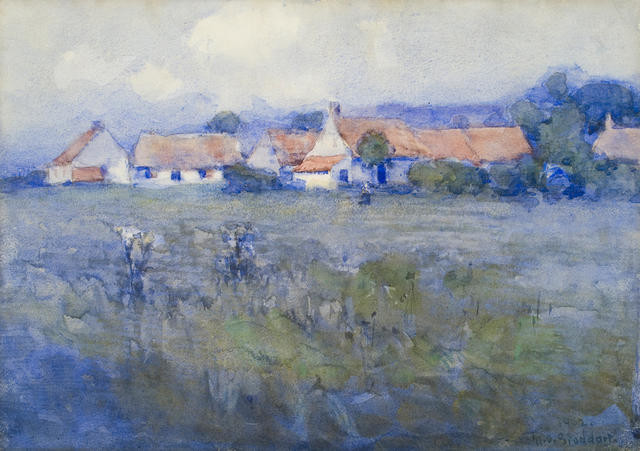
Margaret Stoddart Camiers, France
Nature's Own Voice, 6 February - 26 July 2009
Margaret Stoddart worked exclusively as a watercolourist and painted plein-air landscapes from early in her career. Her work developed towards an impressionistic style while she was based in Europe between 1898 and 1906. At this time she began exploring the various atmospheric effects experienced while painting plein-air, as seen in Camiers, France, where Stoddart uses very wet washes of colour to capture the hazy conditions of the scene.
Collection
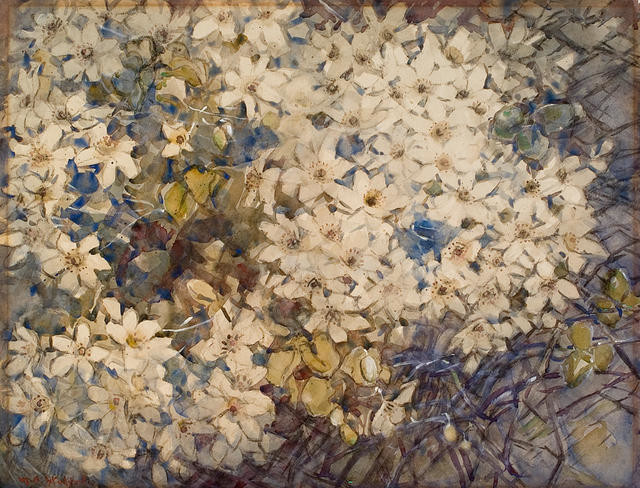
Margaret Stoddart Native Clematis
Margaret Stoddart established a strong reputation for the distinctive, increasingly atmospheric watercolour painting style she developed during her nine years abroad from 1898. Stoddart spent most of her childhood in the rural setting of Te Waipapa Diamond Harbour, followed by three years with her family in Edinburgh from 1876 before they settled in Christchurch in 1880. She and her three sisters enrolled at the Canterbury College School of Art in 1882, its founding year; their father, Mark Stoddart, died in 1885.
After the family’s return to Diamond Harbour in 1897, Margaret left to extend her career in Europe; basing herself in Cornwall at the St Ives artists’ colony. As well as taking further expert tuition, she travelled extensively through England, Norway, France, Switzerland and Italy, where she spent most of her final year away. Stoddart exhibited her flower paintings and landscapes to critical success in Paris and at English commercial and public galleries, including the Royal Academy, before returning home in 1906.
(The Moon and the Manor House, 12 November 2021 – 1 May 2022)
Collection
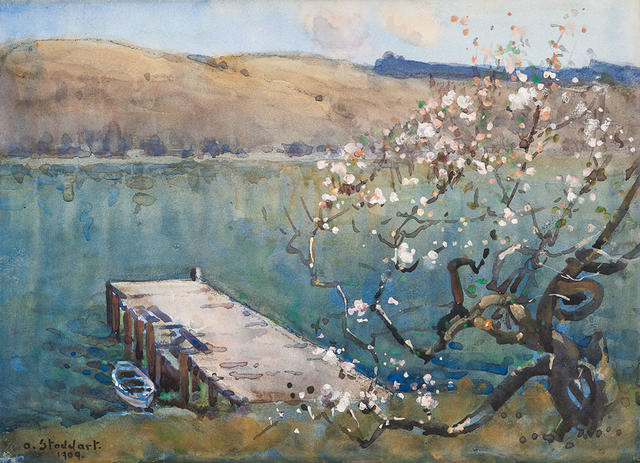
Margaret Stoddart Diamond Harbour
Margaret Stoddart was born in Te Waipapa / Diamond Harbour. Her father gave the harbour its English name after its sparkling waters, and commissioned the jetty’s construction in about 1857. Stoddart spent nine years in Europe studying, painting and exhibiting. When she returned home in 1906 she brought with her a skilful impressionist approach to her work. Stoddart was a prolific watercolourist who favoured coastal locations. At her first solo exhibition at the Canterbury Society of Arts in 1911, most of the fifty works shown had been painted near her family’s home at Diamond Harbour. However, as a reviewer for the Lyttelton Times noted, “New Brighton has received a share of attention, and perhaps it is shown at its best during a storm, gusts of wind howling across the Estuary, bending the tussock and grass on the beach.”
(Te Wheke, 2020)
Collection
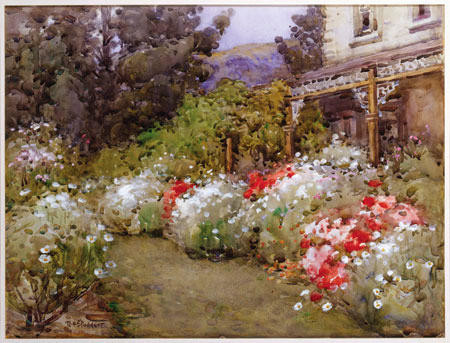
Margaret Stoddart Godley House, Diamond Harbour
On her return from Europe in 1907, Margaret Stoddart lived in Godley House with her mother and sister and remained there until the family’s Diamond Harbour estate was sold off in 1913. The family were keen gardeners, as can be seen by the charming cottage garden. This is one of a number of paintings Stoddart did in Diamond Harbour and shows the style she had developed during her time in Europe. The expressive opaque watercolour treatment is combined with fine fluid washes applied in a quick and direct manner, out of doors before the subject. Stoddart was born in Diamond Harbour, Christchurch, but in 1876 the family sailed for Britain and she received her early education in Edinburgh. The family returned to New Zealand in 1879 and in 1882 Stoddart enrolled at the Canterbury College School of Art. She was a founding member of the Palette Club whose members were concerned with painting out of doors. She travelled to Europe in 1898.
Collection
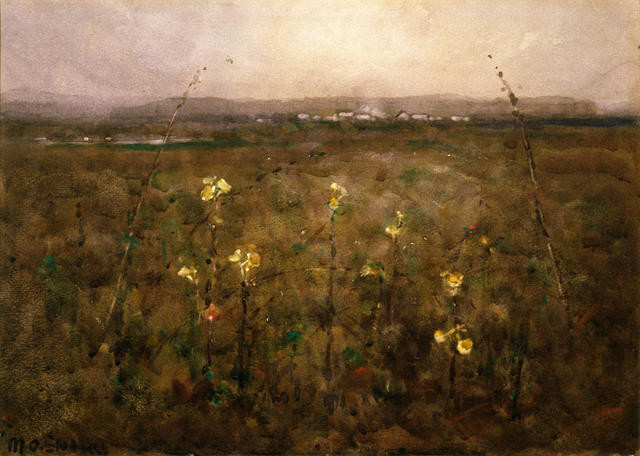
Margaret Stoddart The Moors
Margaret Stoddart’s painting style altered dramatically during the period she spent in Britain between 1898 and 1906. She was based at St Ives, Cornwall, where there was a large contingent of artists whose interests lay primarily in impressionism and plein air painting.
Although the exact location of The Moors is not known for certain, the painting highlights Stoddart’s development at this time. Painted outdoors, loosely applied wet washes of subdued colour effectively convey the overcast atmospheric conditions, which are contrasted with several brightly coloured flowers in the foreground.
Stoddart was born in Diamond Harbour on Banks Peninsula, but in 1876 the family sailed for Britain and she received her early education in Edinburgh. The family returned to New Zealand in 1879, and in 1882 Stoddart enrolled at the Canterbury College School of Art. She was a founding member of the Palette Club, whose members were concerned with painting outdoors.
Collection
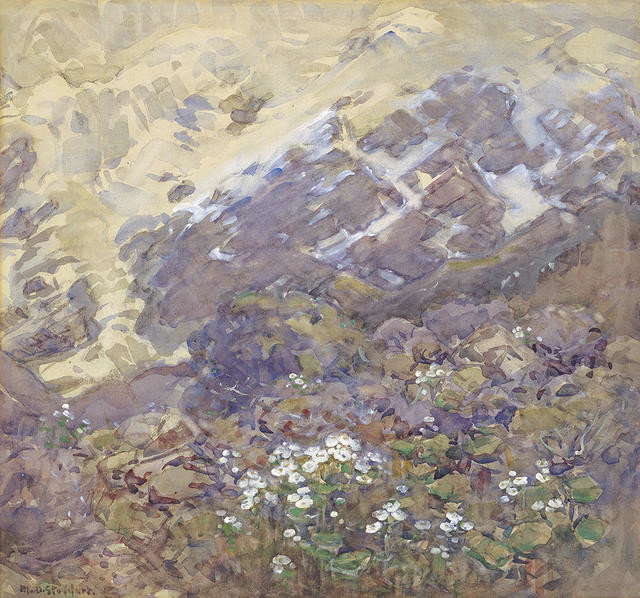
Margaret Stoddart Mountain Lilies
Margaret Stoddart painted many scenes of the Southern Alps, particularly in the Mount Cook National Park region in South Canterbury. Indeed, the lilies featured here are known as ‘Mount Cook’ lilies.
By the time she painted this work, Stoddart was widely recognised as the leading New Zealand flower painter of the time. The immediacy of the detail suggests that she did at least the preliminary work on site, rather than in the studio. The watercolour washes have the Impressionistic style that became Stoddart’s hallmark.
Stoddart was born in Diamond Harbour, on Banks Peninsula, but in 1876 the family sailed for Britain and she received her early education in Edinburgh. The family returned to New Zealand in 1879 and in 1882 Stoddart enrolled at the Canterbury College School of Art. She was a founding member of the Palette Club whose members were concerned with painting out of doors. After living in England for several years, Stoddart returned to New Zealand in 1907 and settled in Diamond Harbour.
Collection
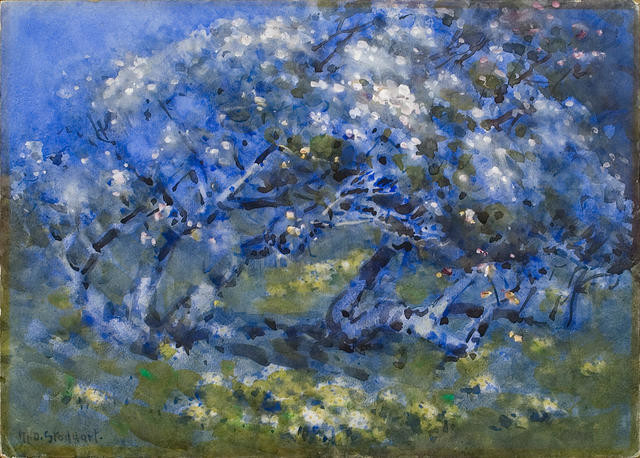
Margaret Stoddart Old Cornish Orchard
Margaret Stoddart was living in St Ives, Cornwall, throughout much of 1902 when this work was painted. Orchards and woodland scenes, particularly in spring when the trees were in blossom, were popular subjects with her and many of her contemporaries. Stoddart was interested in the Newlyn School’s naturalistic style of painting, working directly from nature. In this watercolour she has over-painted the work with an opaque body-colour to represent the blossom. She painted several works exploring the effects of light on blossom at various times of the day. Stoddart was born in Diamond Harbour, Christchurch, but in 1876 the family sailed for Britain and she received her early education in Edinburgh. The family returned to New Zealand in 1879 and in 1882 Stoddart enrolled at the Canterbury College School of Art. She was a founding member of the Palette Club whose members were concerned with painting out of doors. After again living in England for several years, Stoddart returned to New Zealand in 1906 and settled at Diamond Harbour.
(Turn, Turn, Turn: A Year in Art, 27 July 2019 – 8 March 2020)
Collection
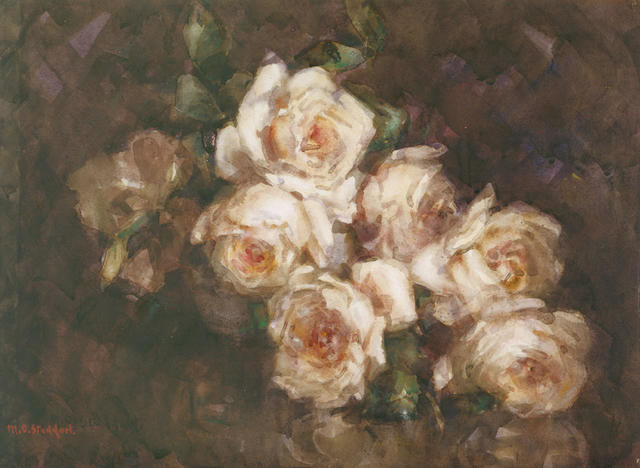
Margaret Stoddart Anna Ollivier Roses
“I live out my own world & follow in the lives of Frances Hodgkins […] and other women painters,” wrote Rita Angus. One of those painters was fellow Waitaha Canterbury artist Margaret Stoddart. Like Margaret, Rita developed a deep appreciation of botanical subjects in her work. Although both artists are known for their landscapes, their approach to watercolour couldn’t be more different; Margaret’s lively impressionistic approach contrasts with Rita’s work, which is rich with the detail usually reserved for a botanical artist illustrating a scientific journal.
(Perilous: Unheard Stories from the Collection, 6 August 2022- )
Collection
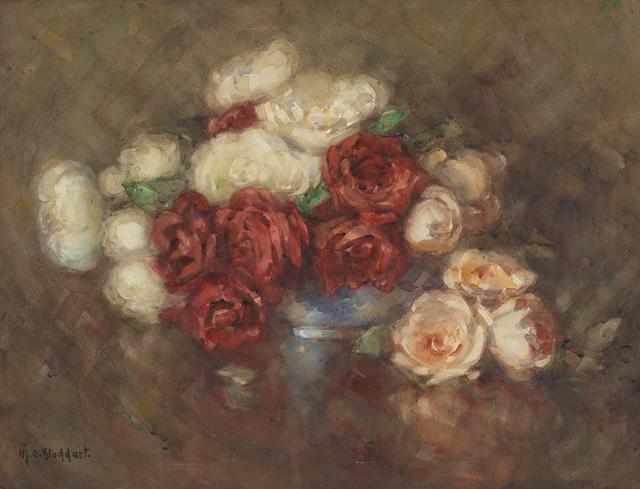
Margaret Stoddart Roses
“I live out my own world & follow in the lives of Frances Hodgkins […] and other women painters”, wrote Rita Angus. One of these other painters was fellow Waitaha Canterbury artist Margaret Stoddart. Both Rita and Margaret developed a deep appreciation of botanical subjects in their practices, alongside their work as landscape painters. Their approach to watercolour couldn’t be more different, however: Margaret with her lively impressionistic approach contrasts with Rita’s accuracy and detail usually reserved for a botanical artist illustrating a scientific journal.
(Perilous: Unheard Stories from the Collection, 6 August 2022- )
Collection
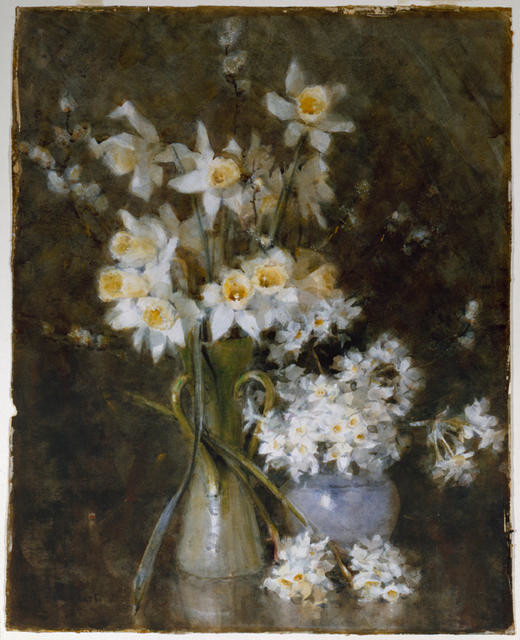
Margaret Stoddart Spring Flowers, Cornwall
Margaret Stoddart established a strong reputation for the distinctive, increasingly atmospheric watercolour painting style she developed during her nine years abroad from 1898. Stoddart spent most of her childhood in the rural setting of Te Waipapa Diamond Harbour, followed by three years with her family in Edinburgh from 1876 before they settled in Christchurch in 1880. She and her three sisters enrolled at the Canterbury College School of Art in 1882, its founding year; their father, Mark Stoddart, died in 1885.
After the family’s return to Diamond Harbour in 1897, Margaret left to extend her career in Europe; basing herself in Cornwall at the St Ives artists’ colony. As well as taking further expert tuition, she travelled extensively through England, Norway, France, Switzerland and Italy, where she spent most of her final year away. Stoddart exhibited her flower paintings and landscapes to critical success in Paris and at English commercial and public galleries, including the Royal Academy, before returning home in 1906.
(The Moon and the Manor House, 12 November 2021 – 1 May 2022)
Collection
![Storm Clouds, Blythburgh, Suffolk [also known as Suffolk Village]](/media/cache/af/4d/af4d7aeab820770e74f984b7eb44dcc0.jpg)
Margaret Stoddart Storm Clouds, Blythburgh, Suffolk [also known as Suffolk Village]
‘Storm clouds, Blythburgh, Suffolk’ is typical of Margaret Stoddart’s growing interest in impressionism and painting outdoors while based in England between 1898 and 1906. The atmospheric conditions of the impending storm above Blythburgh have been rendered directly using wet washes of colour. Stoddart travelled widely, taking sketching trips to France, Italy and throughout Britain, often seeking out picturesque villages such as Blythburgh as her subjects. Stoddart enjoyed living at St Ives, Cornwall. The town’s reputation as a plein-air (open air) artists’ colony made it a magnet for New Zealand artists including Frances Hodgkins and Dorothy Richmond, who visited Stoddart there in 1902. (Brought to Light, November 2009)
Collection
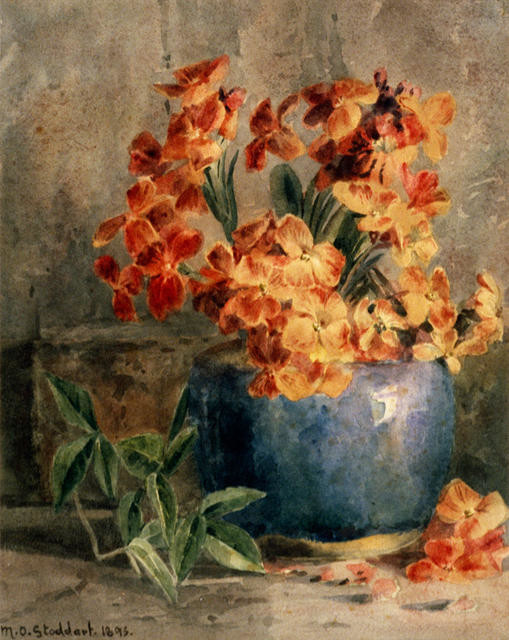
Margaret Stoddart Wallflowers
Flower painting was a popular subject with Victorian colonial women artists. It was considered more appropriate than painting landscapes, which tended to be dominated by male artists. Early in her career and influenced by her studies at the Canterbury College School of Art, Margaret Stoddart painted Wallflowers in a careful manner. The School placed an emphasis on close observation and truth to nature. The Australian botanical artist Ellis Rowan encouraged Stoddart and wrote in the Australian Town and Country Journal that, ‘Her grouping, colouring, form and harmony were perfect.’ Stoddart was born in Diamond Harbour, on Banks Peninsula, but in 1876 the family sailed for Britain and she received her early education in Edinburgh. The family returned to New Zealand in 1879 and in 1882 Stoddart enrolled at the School of Art. She was a founding member of the Palette Club whose members were concerned with painting out of doors. After living in England for several years, Stoddart returned to New Zealand in 1907 and settled in Diamond Harbour.
Collection
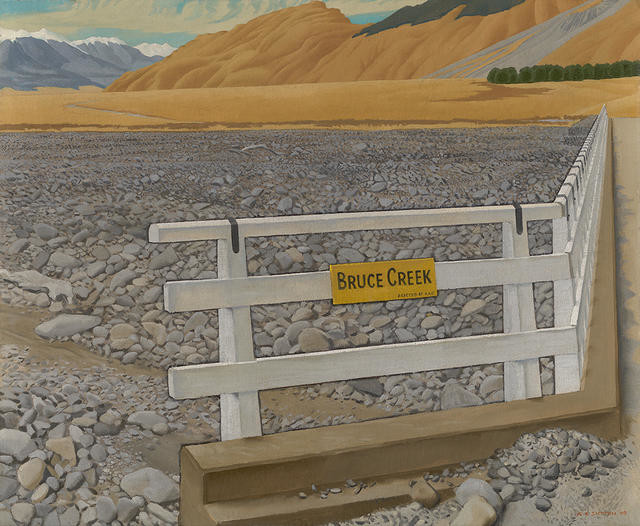
Bill Sutton Dry September
In 1930s New Zealand there was wide discussion about what was unique about the New Zealand situation; what it was that made us different from the rest of the world. Artists and writers began exploring ways to identify our national identity. A number of artists began painting the Canterbury High Country, most famously Rita Angus and her landscape painting of the railway station at Cass. One reviewer in 1936 observed that there was a new quality in the landscapes exhibited in Christchurch that seemed ‘to consist in a removal of the romantic mists which used to obscure mountains and the Canterbury countryside generally. The light now is clear and hard, the colours are in flat planes, and the effect is of seeing the country through a gem-like atmosphere. There is also a new romantic standpoint – an insistence on the isolation and brooding loneliness of the hills.’ It’s a statement that certainly rings true with the Canterbury paintings of Rita Angus, Leo Bensemann, Louise Henderson, Rata Lovell-Smith and Bill Sutton.
(March 2018)
Collection
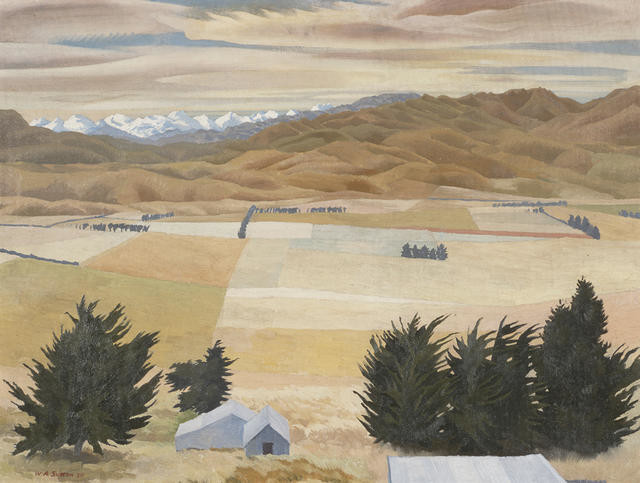
Bill Sutton Hills and Plains, Waikari
William (Bill) Sutton spent most of his life in Christchurch, apart from two years from 1947–49 studying and painting in Britain and Europe. This time away helped attune his eyes to the distinctive qualities of the local regional landscape. Teaching full-time at the Canterbury College School of Art from that time, Sutton lived in a rented studio flat overlooking Victoria Square and became the owner of a Matchless motorbike – upgraded to a 500cc BSA Golden Flash in 1956 – on which he’d leave the city on his weekends in pursuit of countryside to paint.
Human presence has reshaped this landscape, with its bending macrocarpa windbreaks, simple corrugated iron structures and undulating patchwork fields. A palette of subtle ochres, greys and gold presents a characteristically Canterbury scene and typifies the work for which Sutton became appreciated and known.
(Beneath the ranges 18 February – 23 October 2017)
Collection
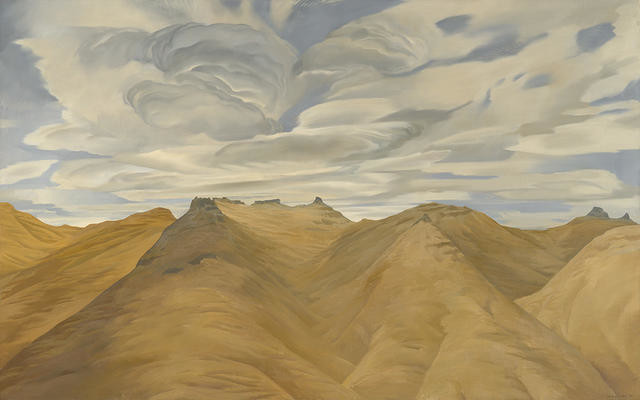
Bill Sutton Te Tihi o Kahukura and Sky, I
This painting by Bill Sutton expands our view of a familiar site on Christchurch’s Port Hills, encouraging the viewer to consider what mysteries may have been present before the arrival of Māori tangata whenua, the people of the land. Te Tihi o Kahukura, or the Citadel of Kahukura, is the first name of Castle Rock, the foregrounded point at the left of the painting. The extended Māori name translates as ‘the Citadel of the Rainbow God (and a) sky full of boiling clouds roaring around all over the place’. According to Kāi Tahu tradition, Kahukura is the atua, or god, who clothed the land; Kahukura later transformed to become the atua of rainbows. Here, Sutton’s interest in landscape, light and colour is applied to a location of significance for Māori. There is an intimacy in the site for Sutton, as he was able to see it “from my upstairs back-landing window”. Sutton’s house remains in what is now known as ‘the red zone’, an earthquake-battered place of an undetermined future.
(Te Tihi o Kahukura: The Citadel of Kahukura, 18 Februay 2017 - 18 May 2018)
Collection
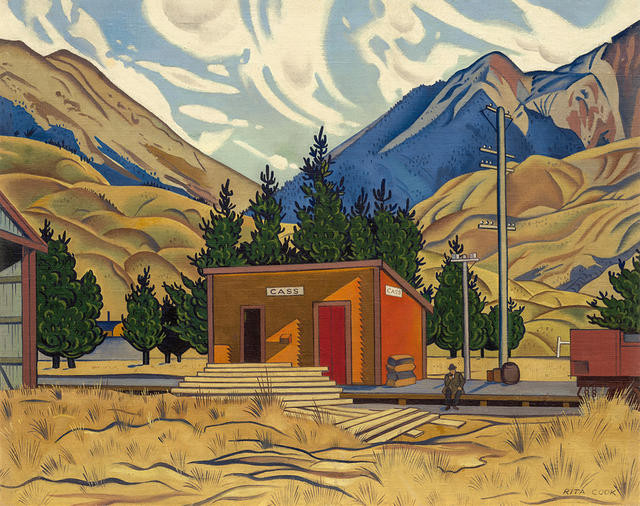
Rita Angus Cass
This work by Rita Angus has come to symbolise the hard-edged clarity of the Canterbury school of landscape painting. It was made following the artist’s ten-day visit to the remote high country railway settlement of Cass in 1936 with painters Louise Henderson and Julia Scarvell. The Canterbury style was also associated with an atmosphere of isolation and emptiness, often emphasised through small signs of human occupation and intervention placed within a much larger natural environment. While these aspects play an important role in Cass, the work also benefits from a sense of expectation, as we wait, with that solitary, overcoat-clad figure, for the train to arrive.
(Absence, May 2023)
Collection
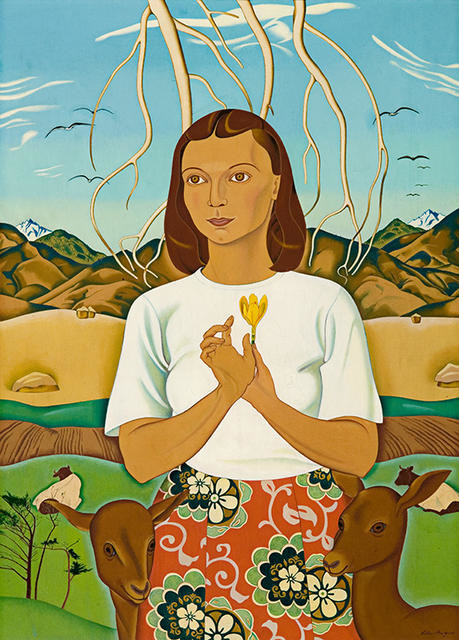
Rita Angus A Goddess of Mercy
Ōtautahi-trained painter Rita Angus is known for her distinctive graphic style, clear light and bold colours. A Goddess of Mercy is the first of three goddess works she painted. Informed by her feminist worldview, Rita saw the goddess portraits as the most important examples of her pacifist ideas. This work also has personal significance. Rita’s sister Edna died suddenly in 1940, and the pattern on the subject’s skirt comes from one of Edna’s favourite outfits. Surrounding the figure we see symbolic clues to a relationship with nature: a deer at the figure’s side, willow branches forming a halo around her head and the crocus flower clasped in her hand, a hopeful sign for the coming of spring.
(Perilous: Unheard Stories from the Collection, 6 August 2022- )
Collection

Rita Angus Mountains, Cass
“I was glad to see this painting again for a few minutes. […] I was ‘knocked out’ by the clear admission of truth. I am amazed that at one time (years ago), and in about three to four hours, I had the power & courage to paint Cass.”
—Rita Angus
In the vast emptiness, 8 January - 21 August 2016
Notes
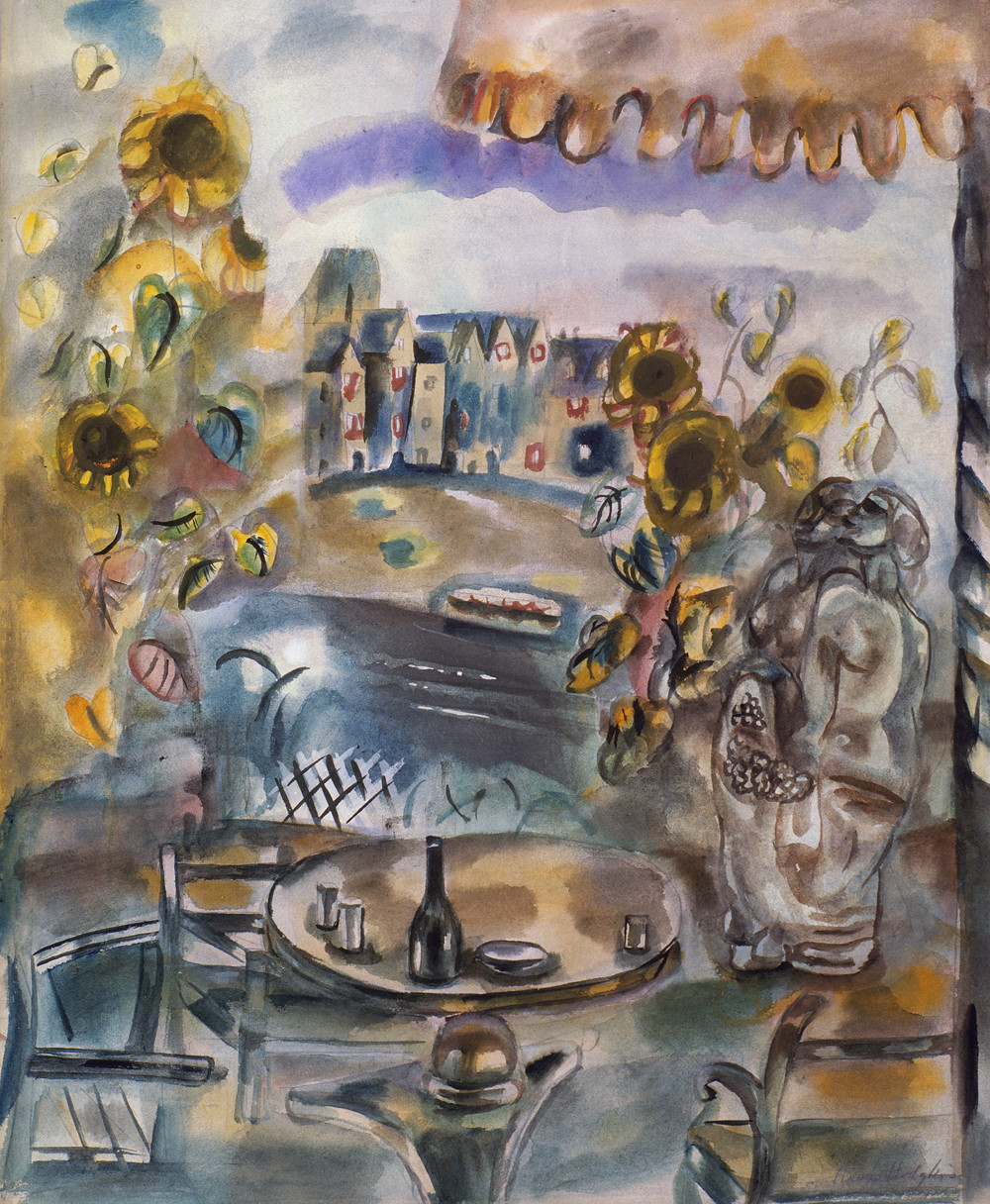
The Watercolour Collection
The Gallery's Watercolour Collection had modest beginnings, but over the past 70 years it has grown steadily by gift and purchase and, of all the Collections, still maintains a largely traditional emphasis. When the Gallery opened in June 1932, just 28 of the 128 paintings on display were watercolours and, of these, 11 were by British artists and 17 by New Zealanders. Among the mostly nineteenth century British watercolours were those by Helen Allingham, Edgar Bundy, Matthew Hale, Laura Knight, William Lee Hankey and Ernest Waterlow. In contrast, the New Zealand watercolours were by mostly contemporary or early twentieth century artists and included works by James Cook, Olivia Spencer Bower, Margaret Stoddart, Maude Sherwood, Eleanor Hughes and Alfred Walsh. The foundation Watercolour Collection included two paintings of larger than usual dimensions. William Lee Hankey's We've been in the Meadows all day (1184 x 878mm) and Charles N. Worsley's Mount Sefton (996 x 1105mm) are still greater in scale than any other work in the Watercolour Collection.





